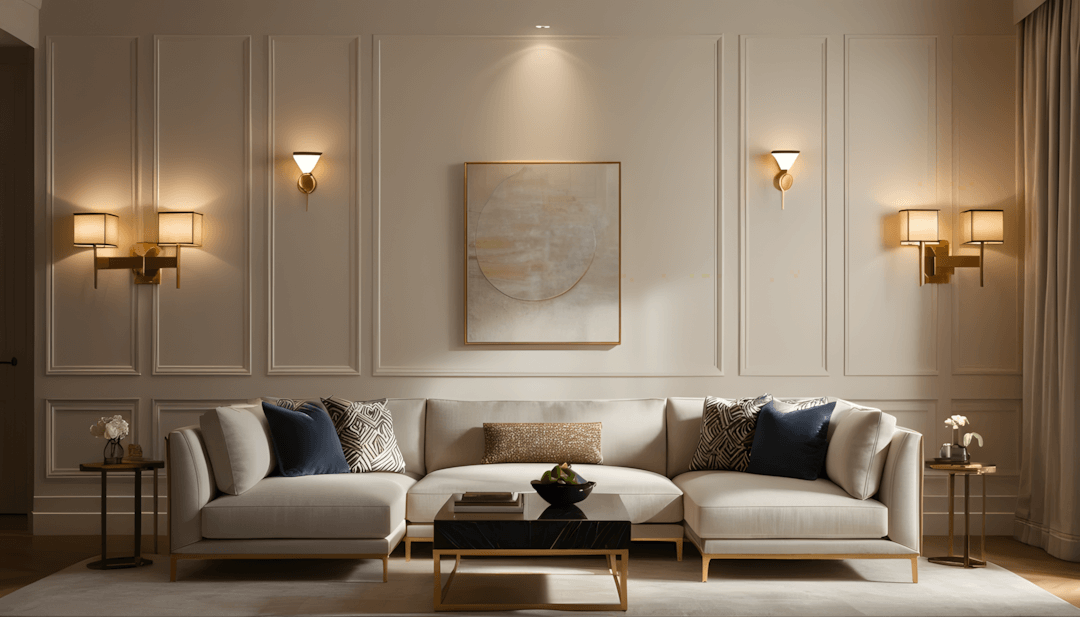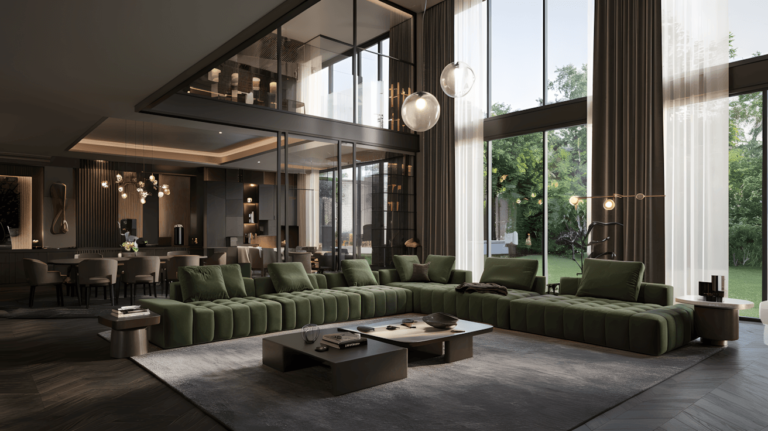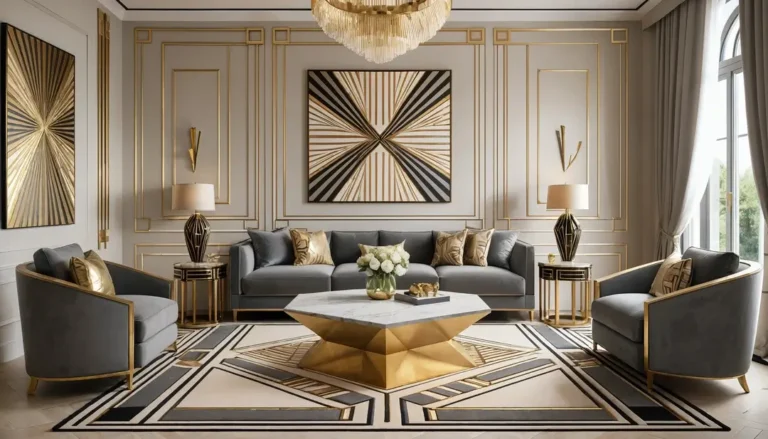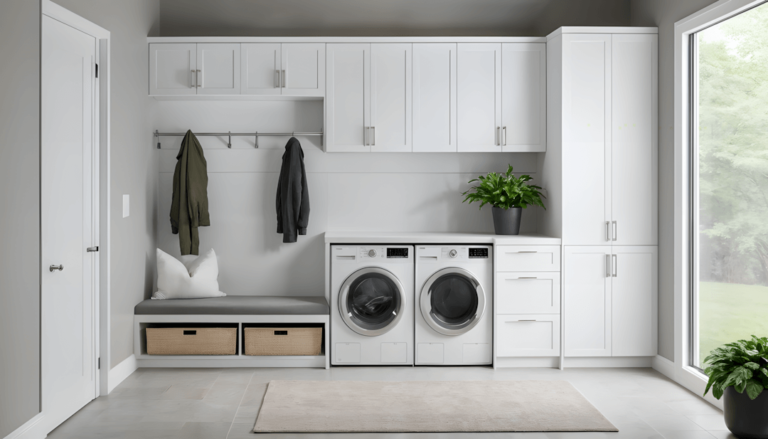In my experience working with homeowners on living room renovations, I’ve observed that wall treatments often serve as the most impactful design elements for transforming spaces. Through various projects, I’ve learned that thoughtful wall decor typically creates focal points while reflecting personal style and enhancing the overall atmosphere of living areas.
Note: For any structural modifications, electrical work, or installations mentioned in this article, always consult with licensed professionals to ensure safety and code compliance.
What makes wall decor particularly effective in living room design is its ability to establish mood, add personality, and create visual interest without requiring major renovations. I’ve found that homeowners often choose wall treatments because they typically provide significant aesthetic impact while remaining relatively budget-friendly compared to furniture or architectural changes.
The key to successful wall decor often lies in balancing personal expression with overall design cohesion. Effective wall treatments typically consider room proportions, existing furniture, lighting conditions, and the intended atmosphere while reflecting the inhabitants’ lifestyle and aesthetic preferences.
Here are 25 wall decor approaches that often work well in different living room environments, based on observations from various design projects.
1. Curated Gallery Wall Strategy
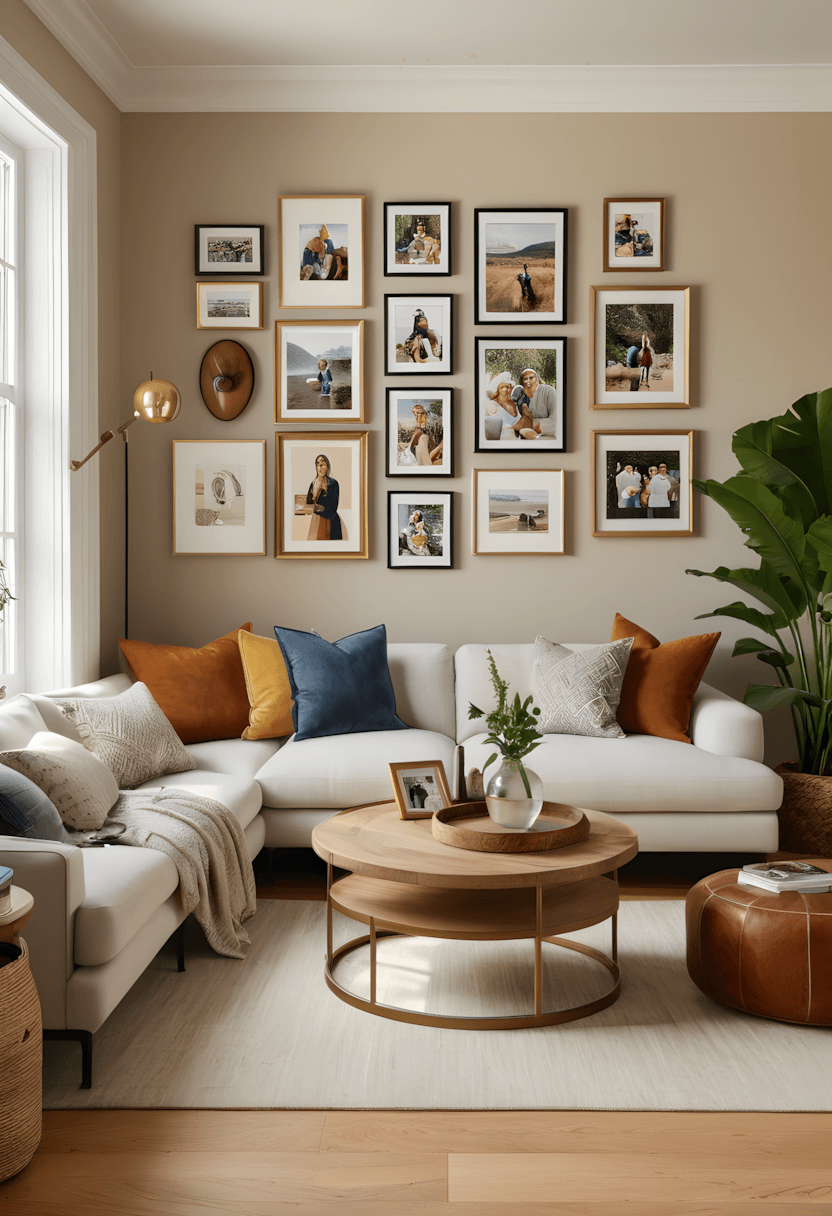
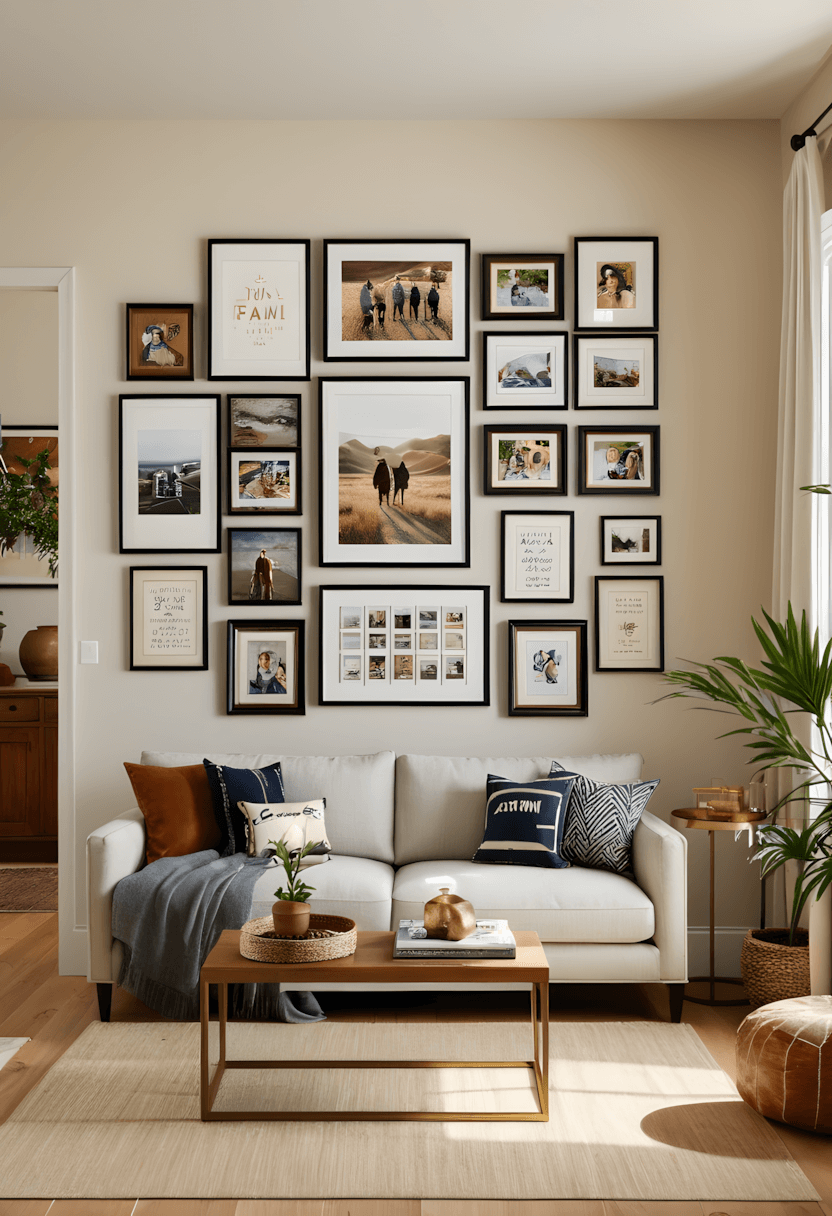
This personal approach often appeals to homeowners wanting to display meaningful collections and artwork. Gallery walls typically combine various frame styles and artwork types to create engaging focal points that reflect individual tastes and experiences.
Design consideration: Consistent color schemes or unifying themes often help diverse pieces work together cohesively while maintaining visual interest.
Planning approach: Laying out arrangements on the floor before hanging often ensures balanced compositions and proper spacing between elements.
2. Large Mirror Integration
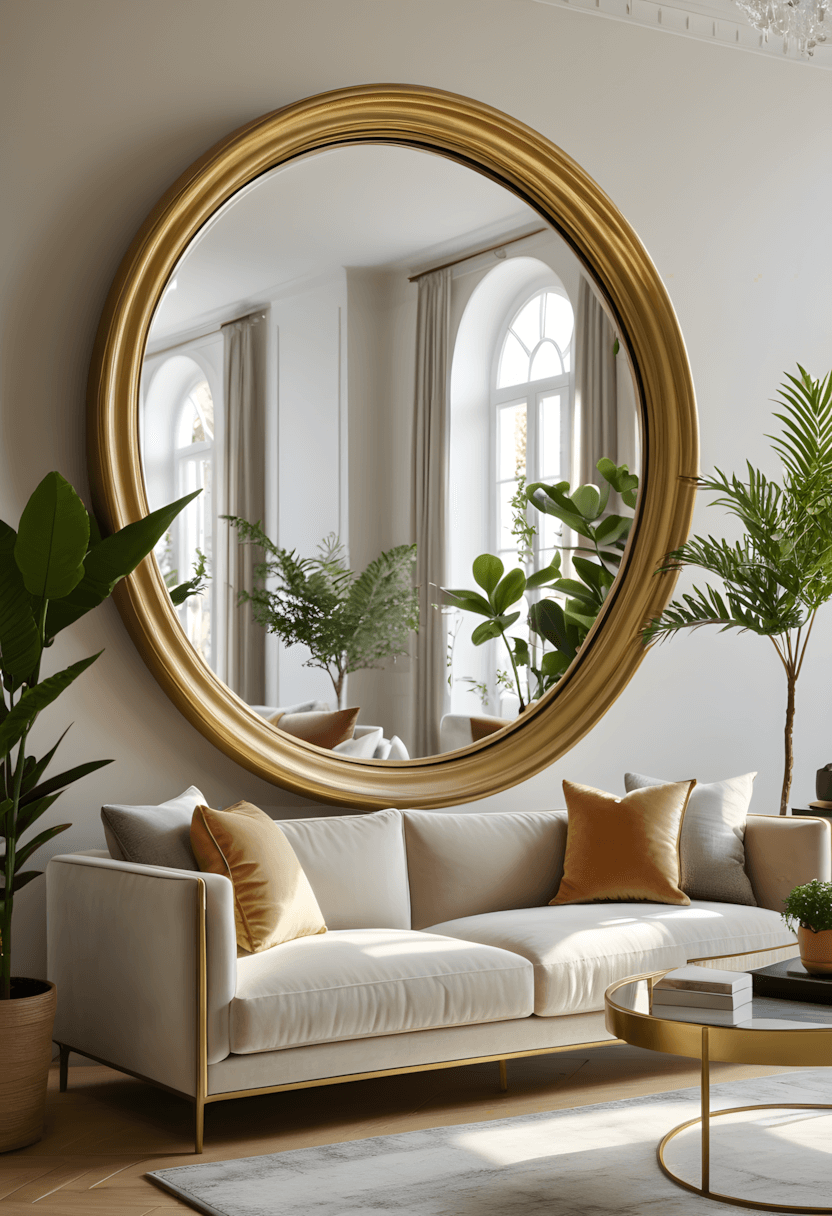
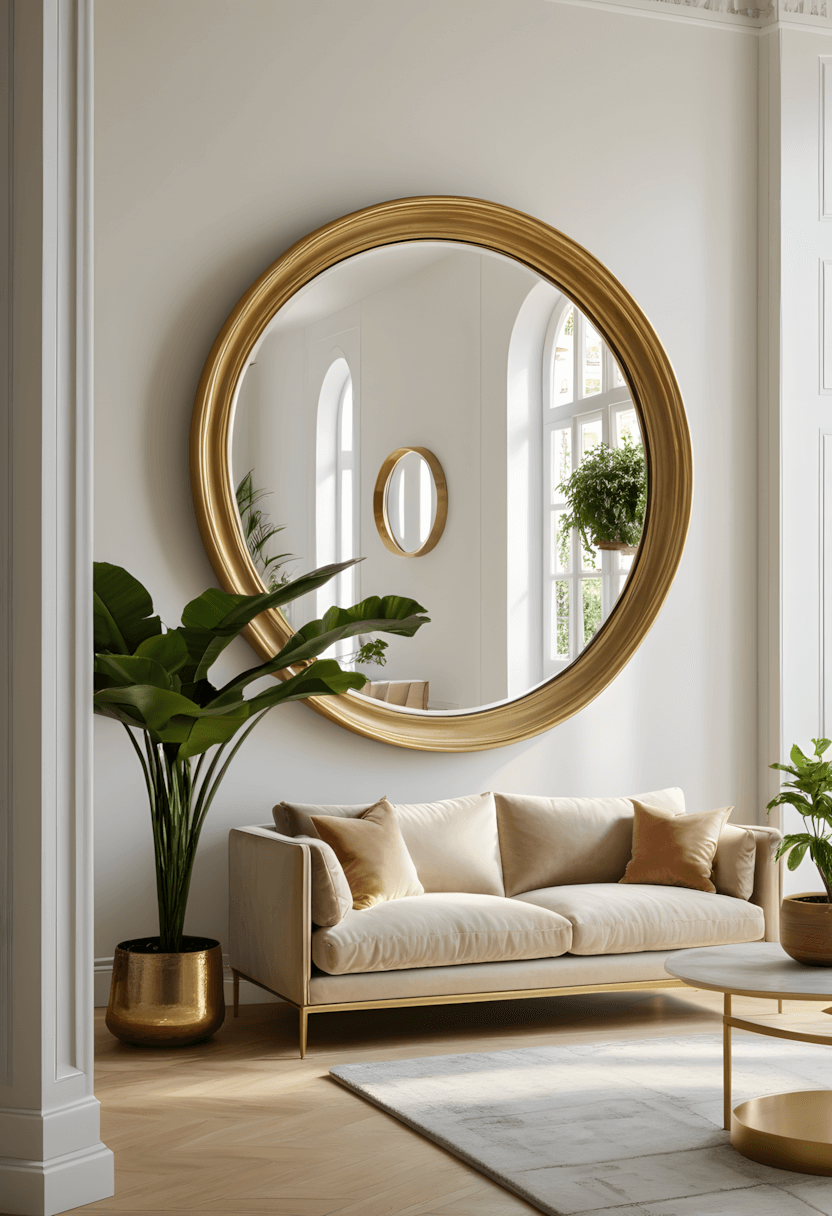
This space-enhancing approach often works well for homeowners wanting to increase light and create illusions of larger spaces. Oversized mirrors typically serve both functional and decorative purposes while adding sophisticated focal points.
Placement strategy: Positioning mirrors across from windows often maximizes natural light reflection, while placement above furniture typically creates intentional focal points.
Frame consideration: Unique frame designs often add personality while ensuring the mirror complements rather than competes with other room elements.
3. Floating Shelf Display
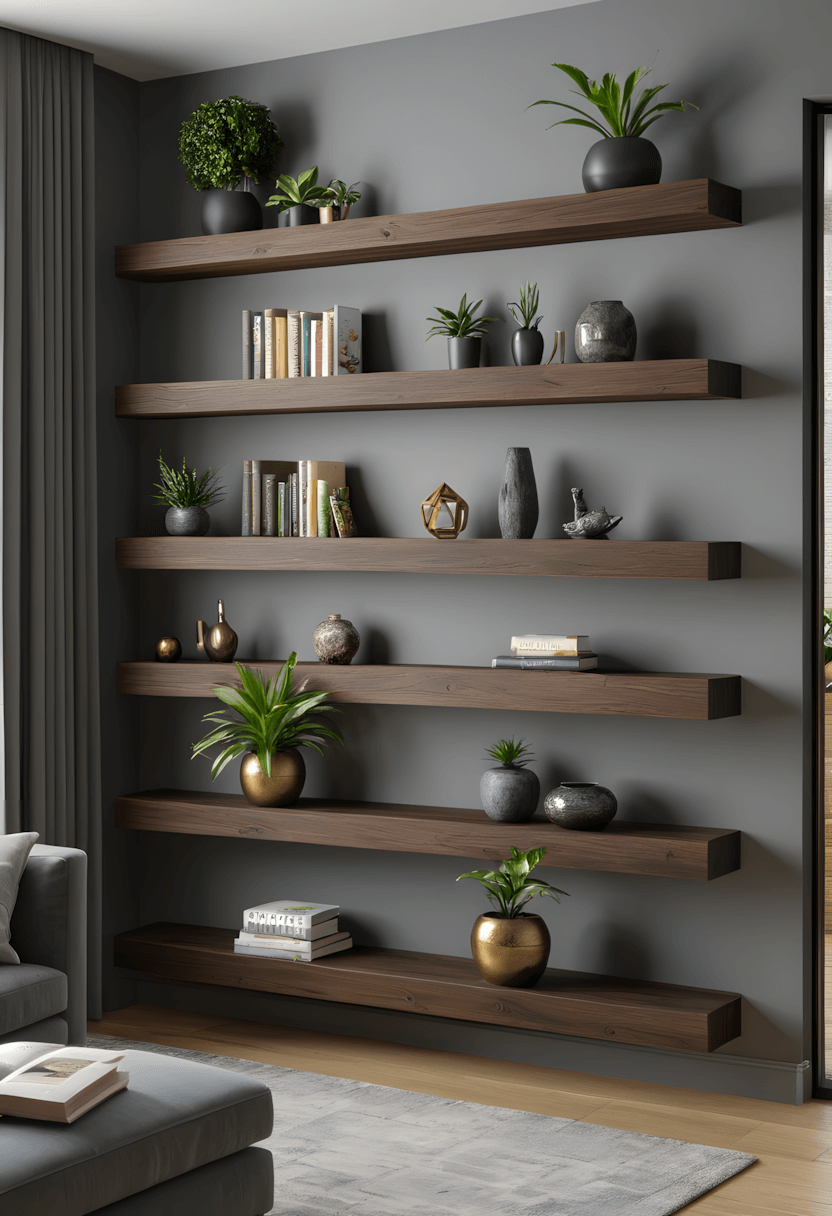
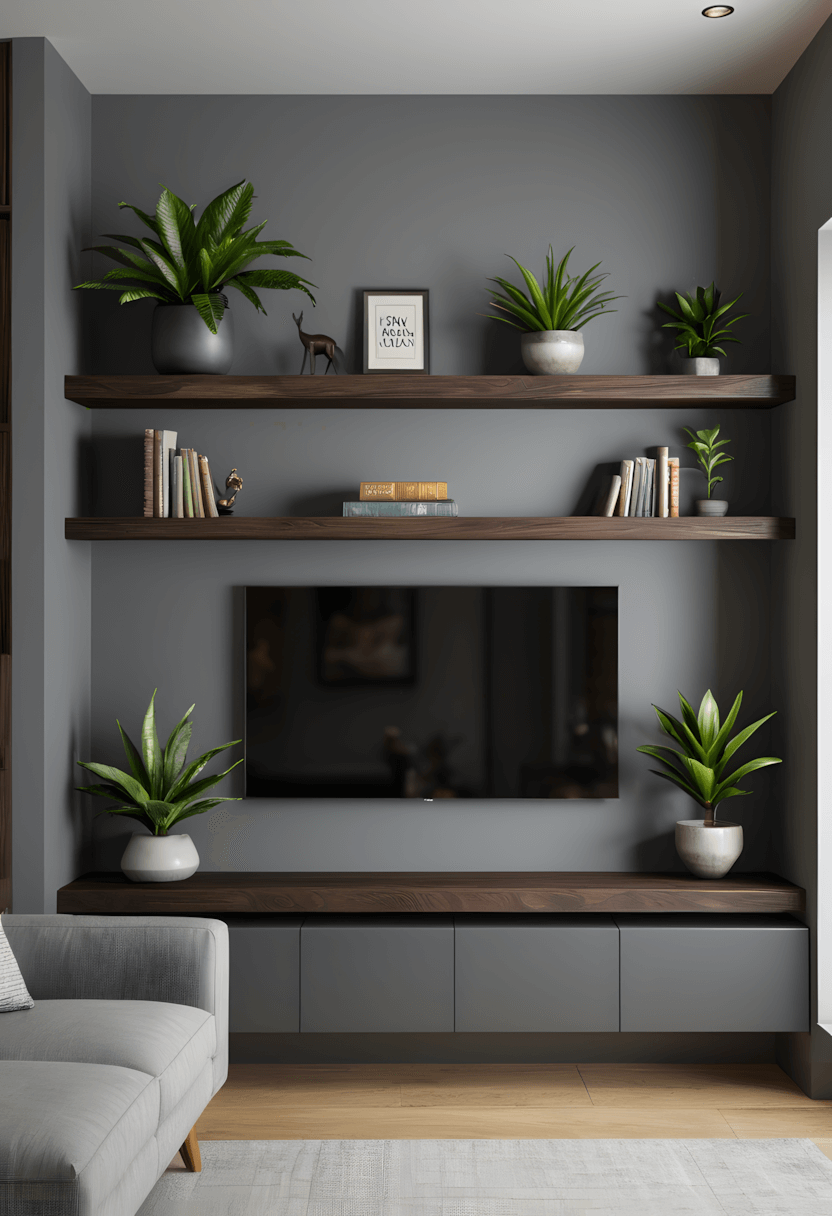
This functional approach often appeals to homeowners needing storage solutions that contribute to rather than detract from room aesthetics. Floating shelves typically provide display opportunities while maintaining clean, uncluttered appearances.
Arrangement options: Symmetrical placement often creates polished, organized looks, while staggered heights typically provide more relaxed, casual aesthetics.
Display strategy: Mixing books, plants, and decorative objects often creates lived-in appeal while maintaining visual organization and interest.
4. Textural Wall Hanging Integration

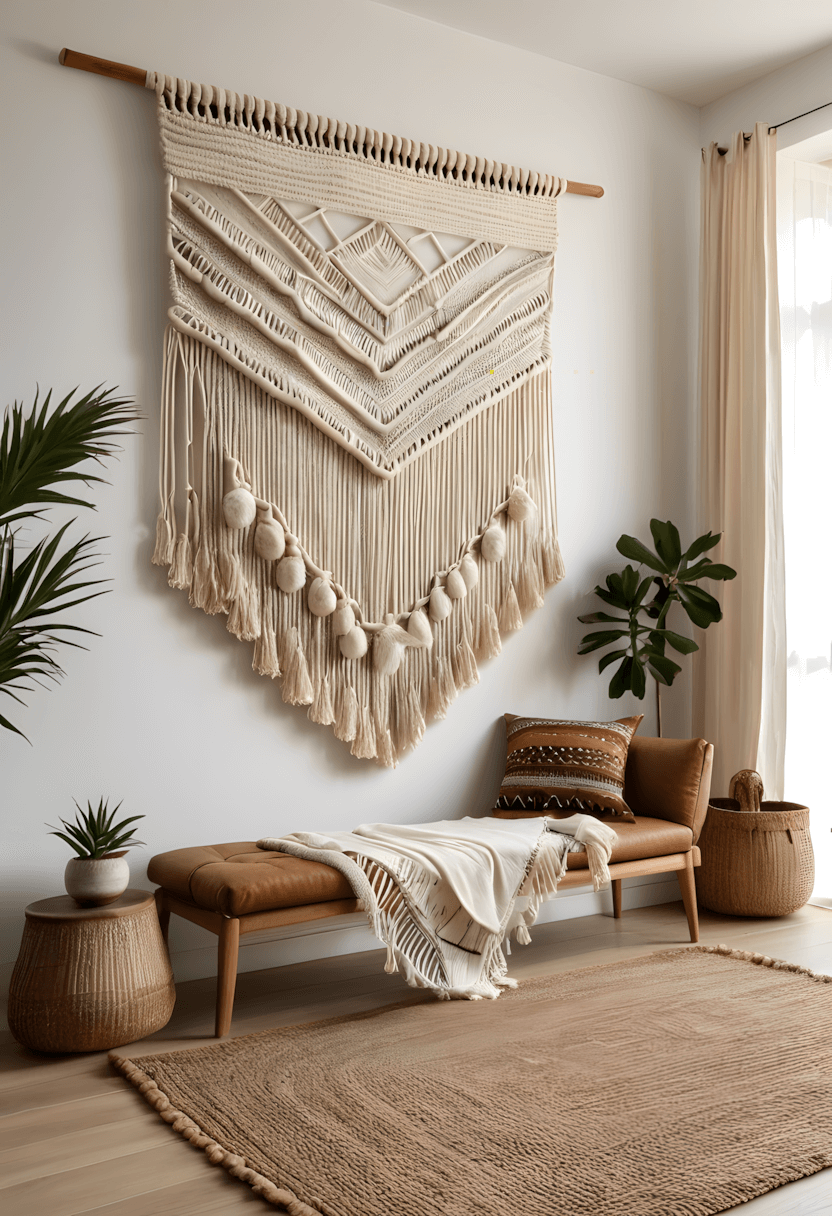
This dimensional approach often works well for homeowners wanting to add warmth and tactile interest. Woven hangings, macramé pieces, or fabric art typically soften hard surfaces while adding organic, handcrafted character.
Material consideration: Natural fibers like cotton, wool, and jute often provide authentic textures while complementing various design styles from bohemian to modern.
Scale planning: Larger pieces often work as dramatic focal points, while smaller grouped pieces typically create layered, collected appearances.
5. Statement Wallpaper Application
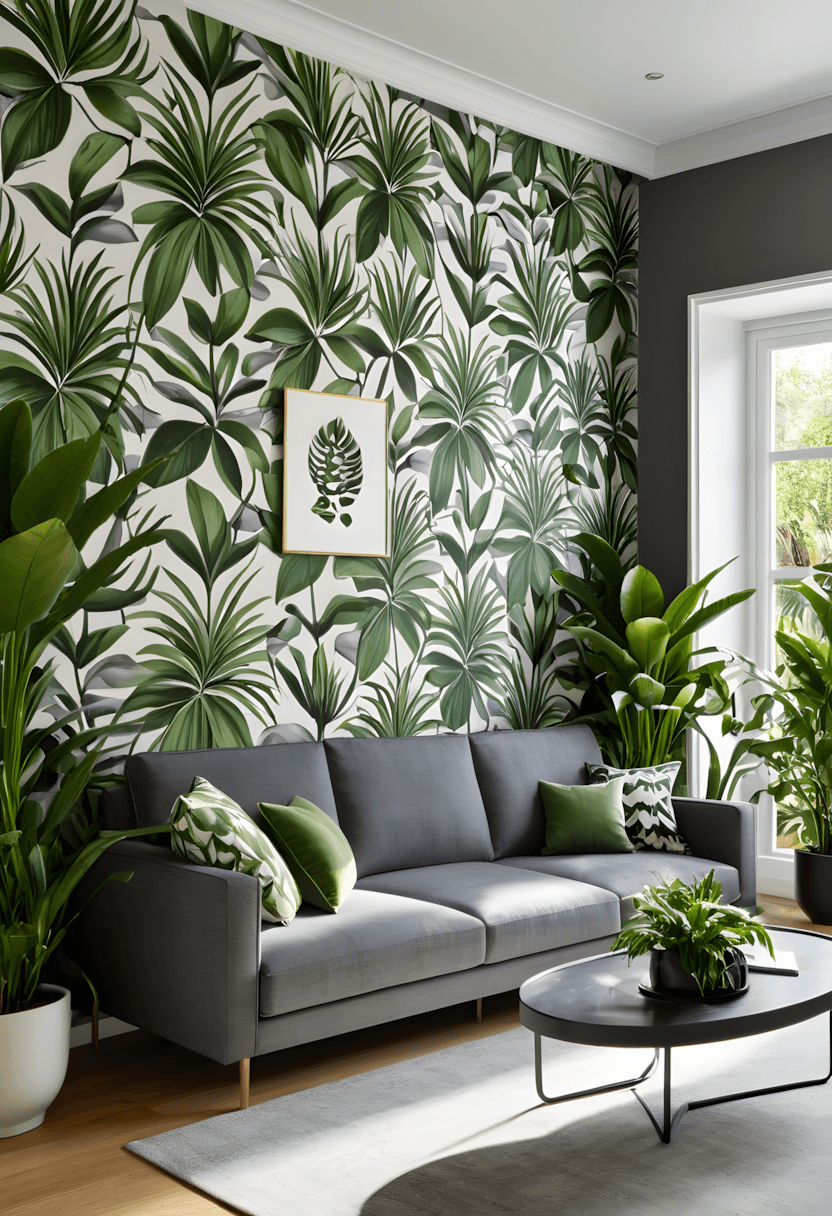
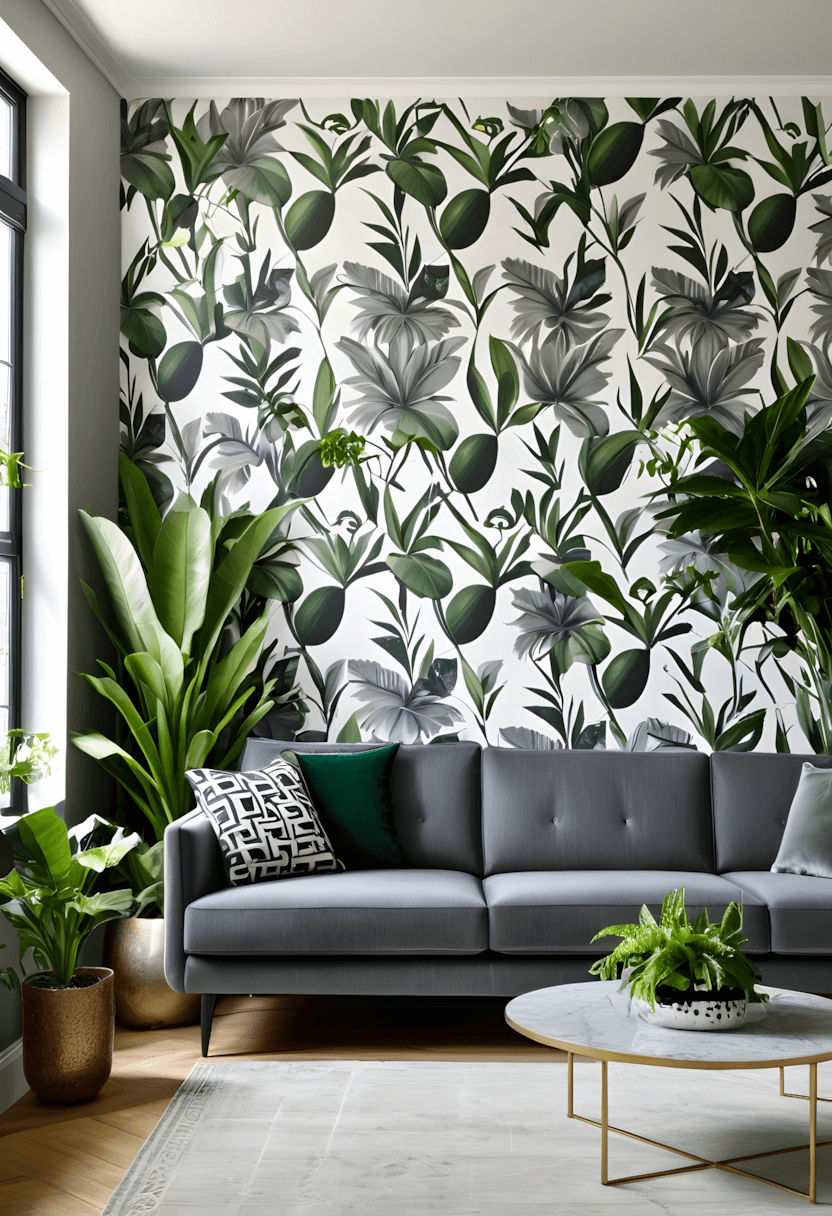
This bold approach often appeals to homeowners wanting dramatic transformation through pattern and color. Contemporary wallpaper designs typically offer sophisticated alternatives to paint while creating immediate visual impact.
Application strategy: Feature walls often provide dramatic effect without overwhelming spaces, while full-room application typically works best with subtle patterns.
Pattern consideration: Large-scale patterns often work well in spacious rooms, while smaller patterns typically suit more intimate spaces better.
6. Vintage Poster Collections
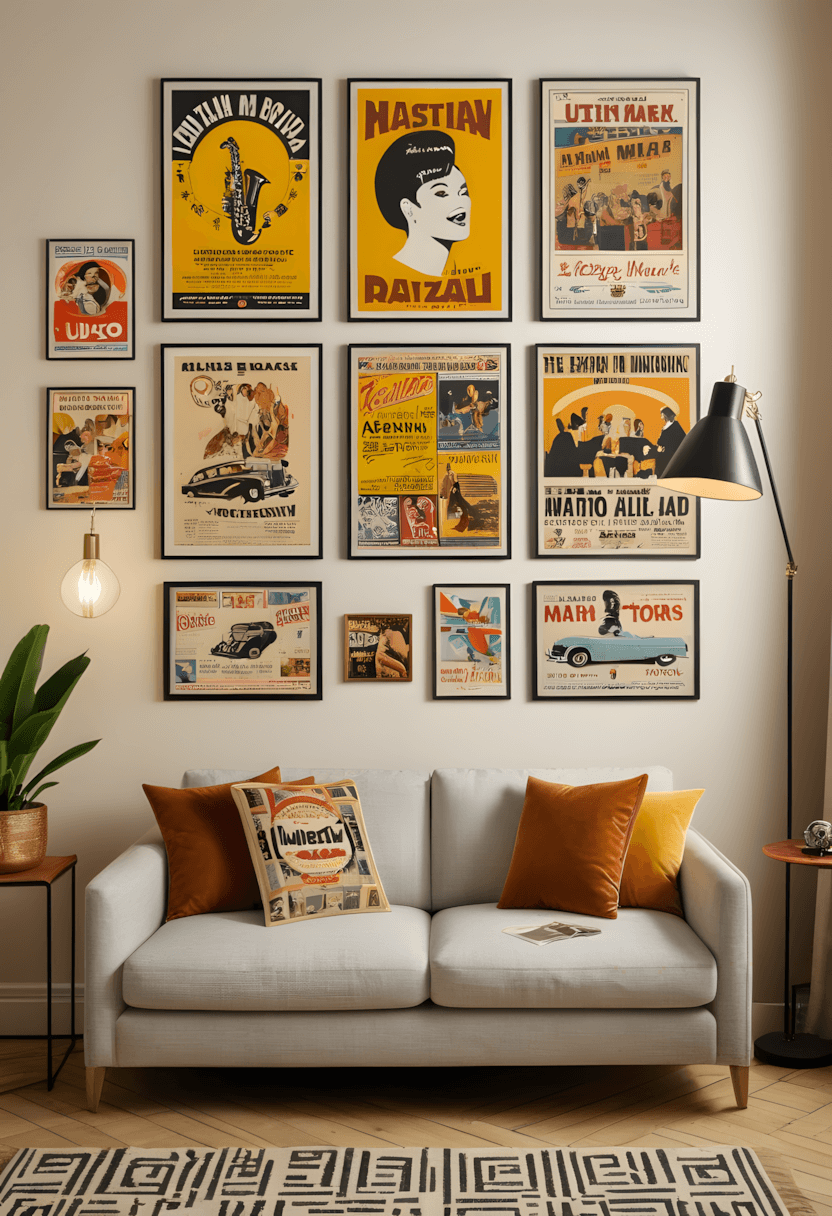
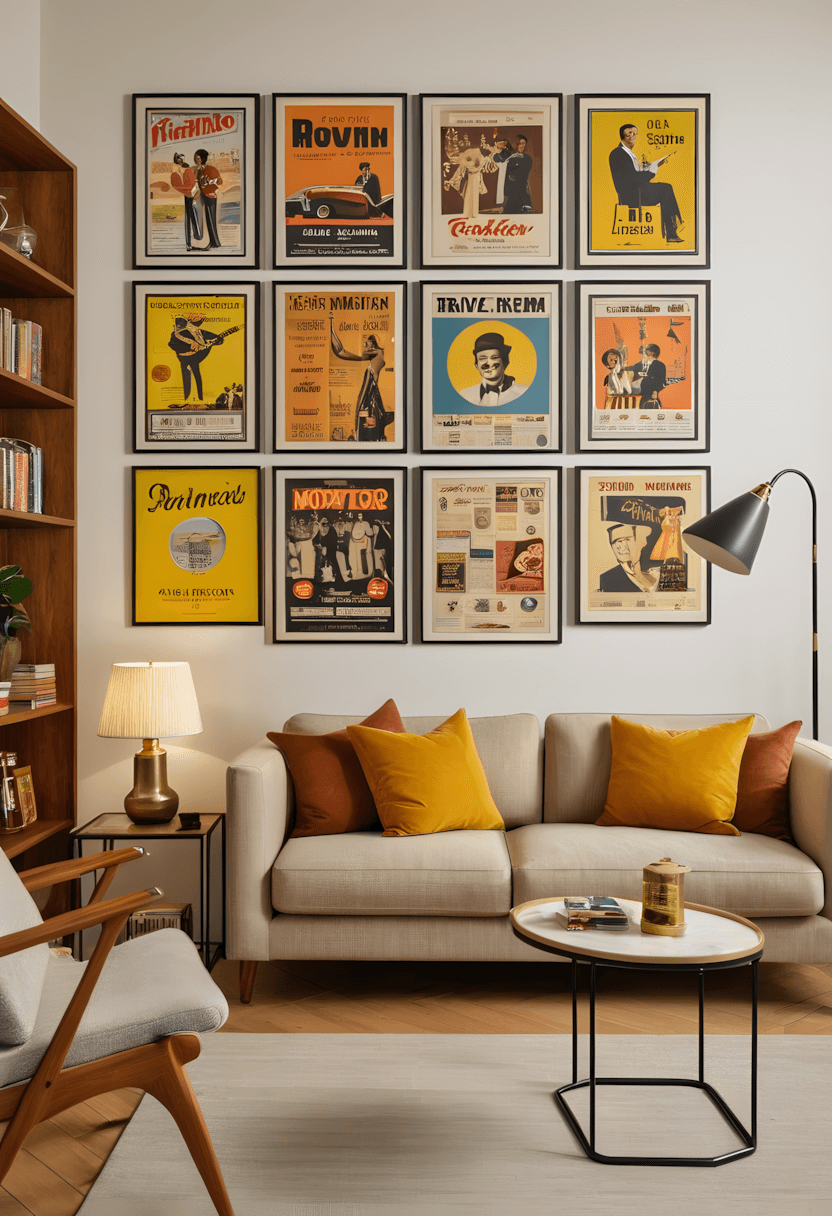
This nostalgic approach often works well for homeowners appreciating historical or cultural references. Vintage posters typically add personality and conversation starters while reflecting individual interests and experiences.
Framing strategy: Consistent framing often creates cohesive collections, while varied frames typically provide more eclectic, personalized appearances.
Theme development: Focusing on specific eras, topics, or styles often creates more intentional collections than random vintage pieces.
7. Living Wall Systems
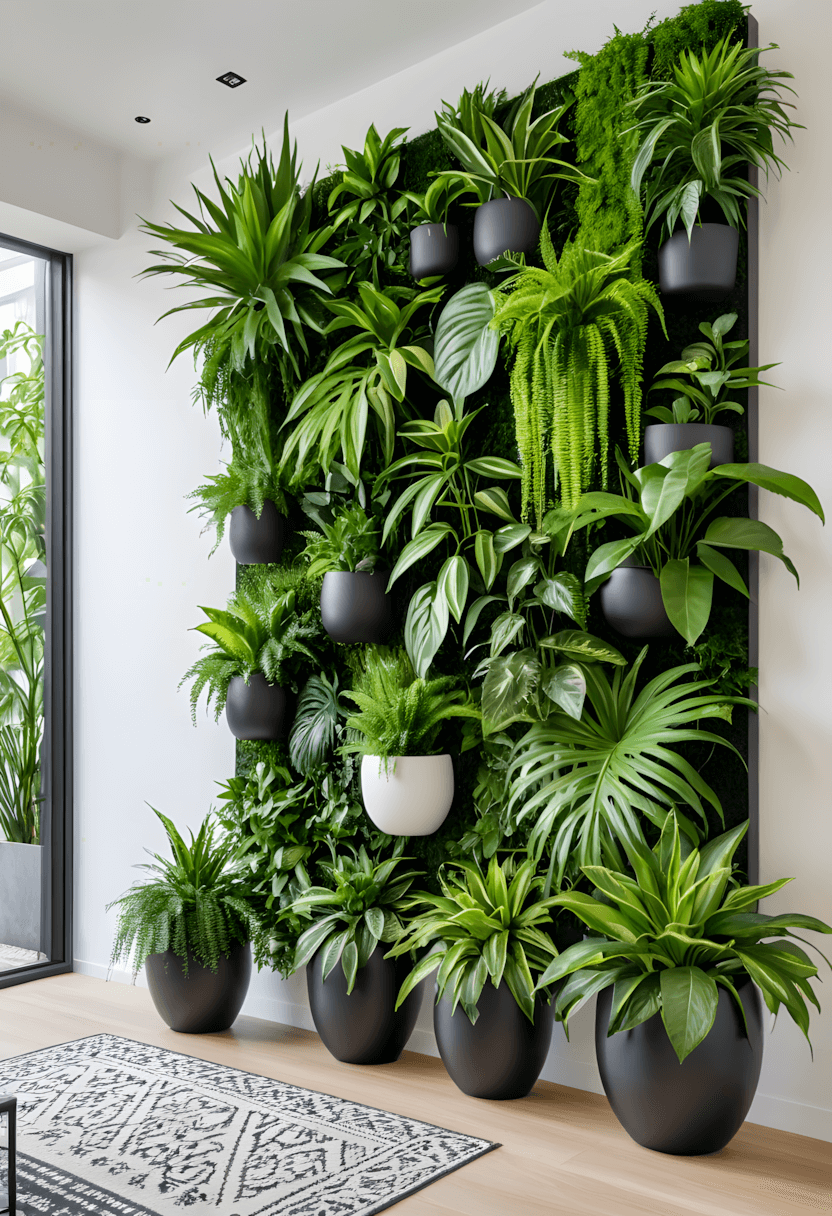
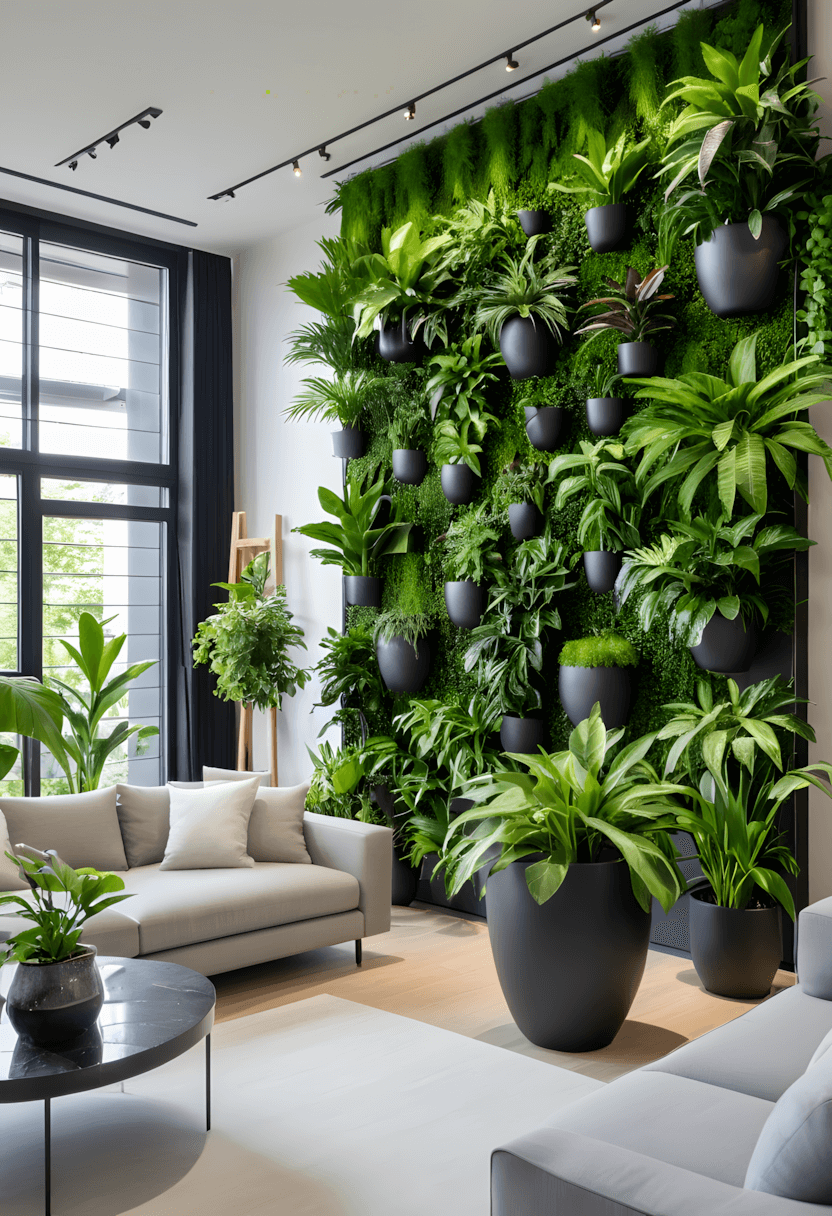
This organic approach often appeals to homeowners wanting to bring nature indoors while creating unique focal points. Vertical gardens or wall-mounted planters typically provide fresh, living artwork while improving air quality.
Plant selection: Choosing varieties with similar light and water requirements often ensures long-term success and consistent appearance.
Maintenance consideration: Accessible placement and proper drainage often become crucial for maintaining healthy, attractive plant walls over time.
8. Sculptural Wall Art
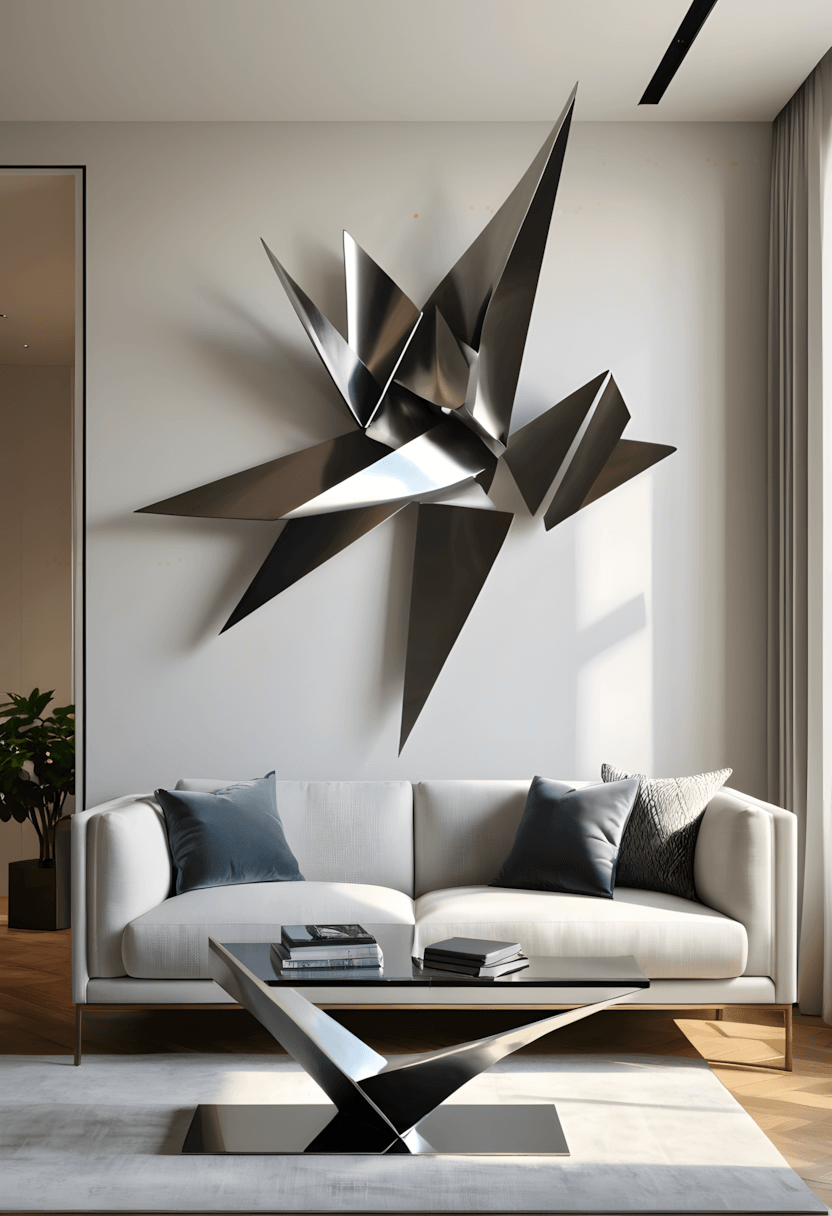
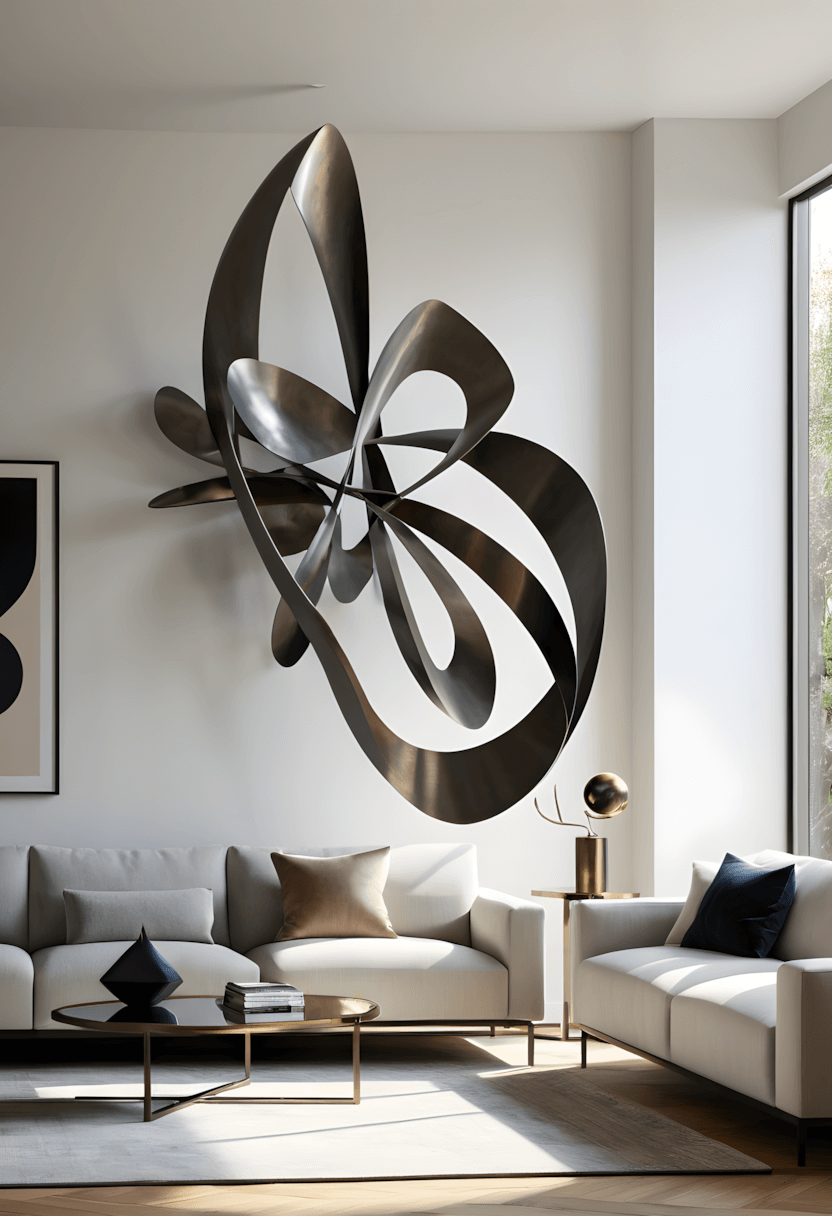
This dimensional approach often works well for homeowners appreciating three-dimensional art and unique focal points. Sculptural pieces typically create dramatic shadows and lighting effects while adding sophisticated artistic elements.
Material variety: Wood, metal, ceramic, or mixed-media pieces often provide different aesthetic qualities while complementing various design styles.
Lighting interaction: Proper lighting often enhances sculptural elements by creating interesting shadows and highlighting textural details.
9. Abstract Painting Display
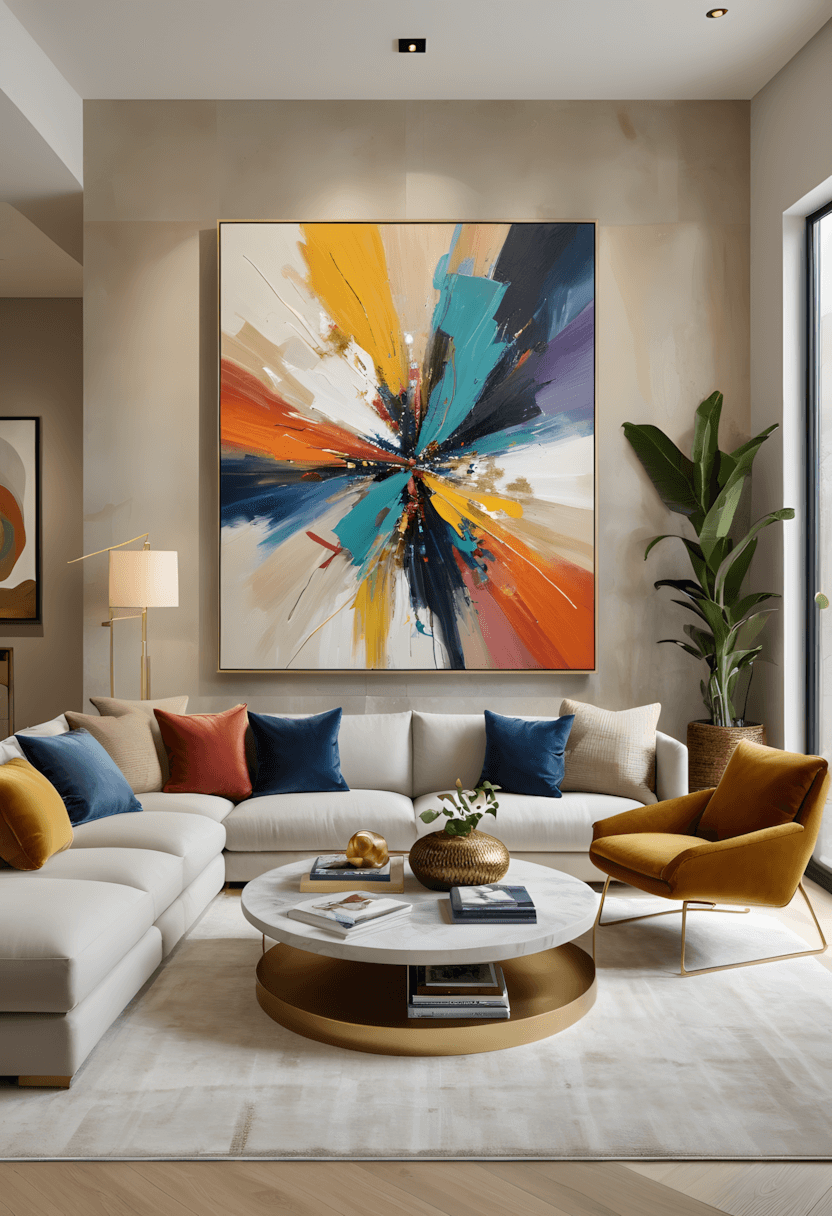
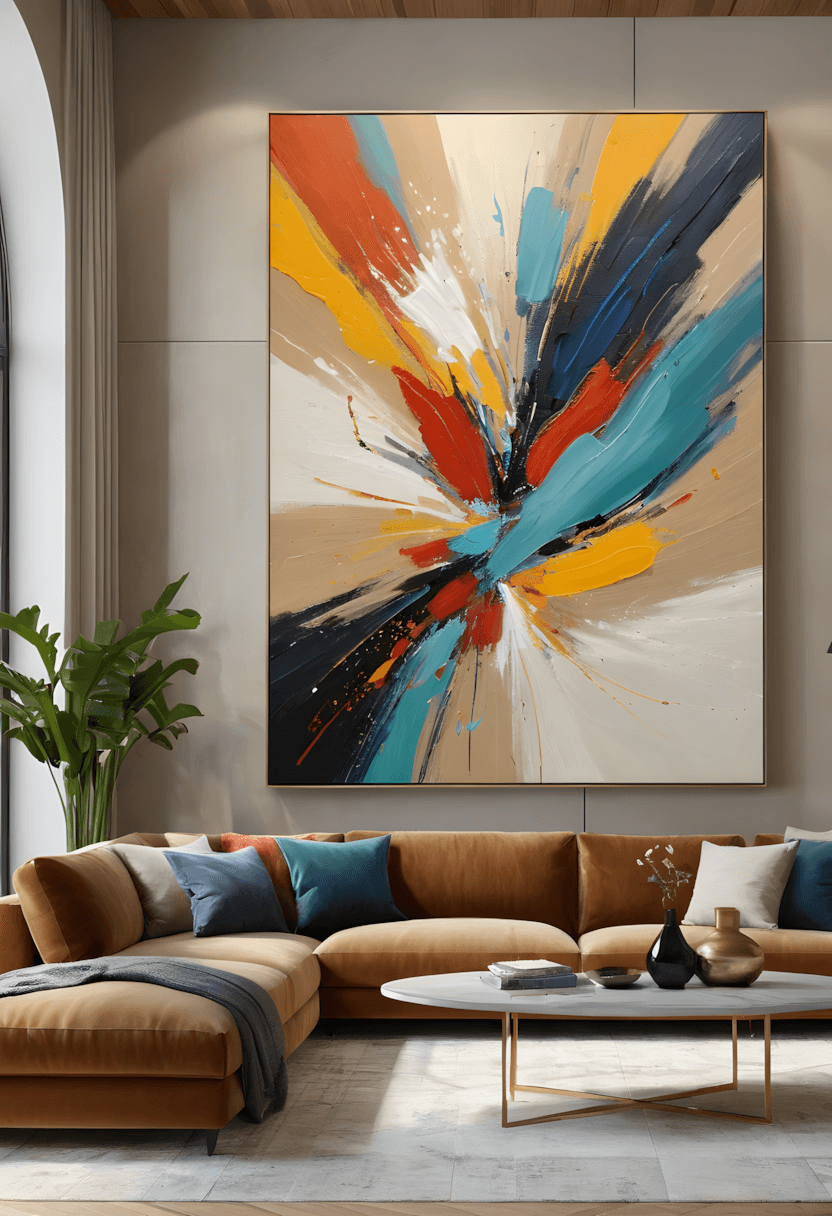
This artistic approach often appeals to homeowners wanting sophisticated color and composition without literal representation. Abstract artwork typically allows for personal interpretation while adding color and visual interest.
Size consideration: Large-scale pieces often create dramatic focal points, while grouped smaller works typically provide more intimate, collected feelings.
Color coordination: Choosing pieces that complement existing room colors often creates harmony, while contrasting colors typically add energy and excitement.
10. Geometric Wall Decal Application
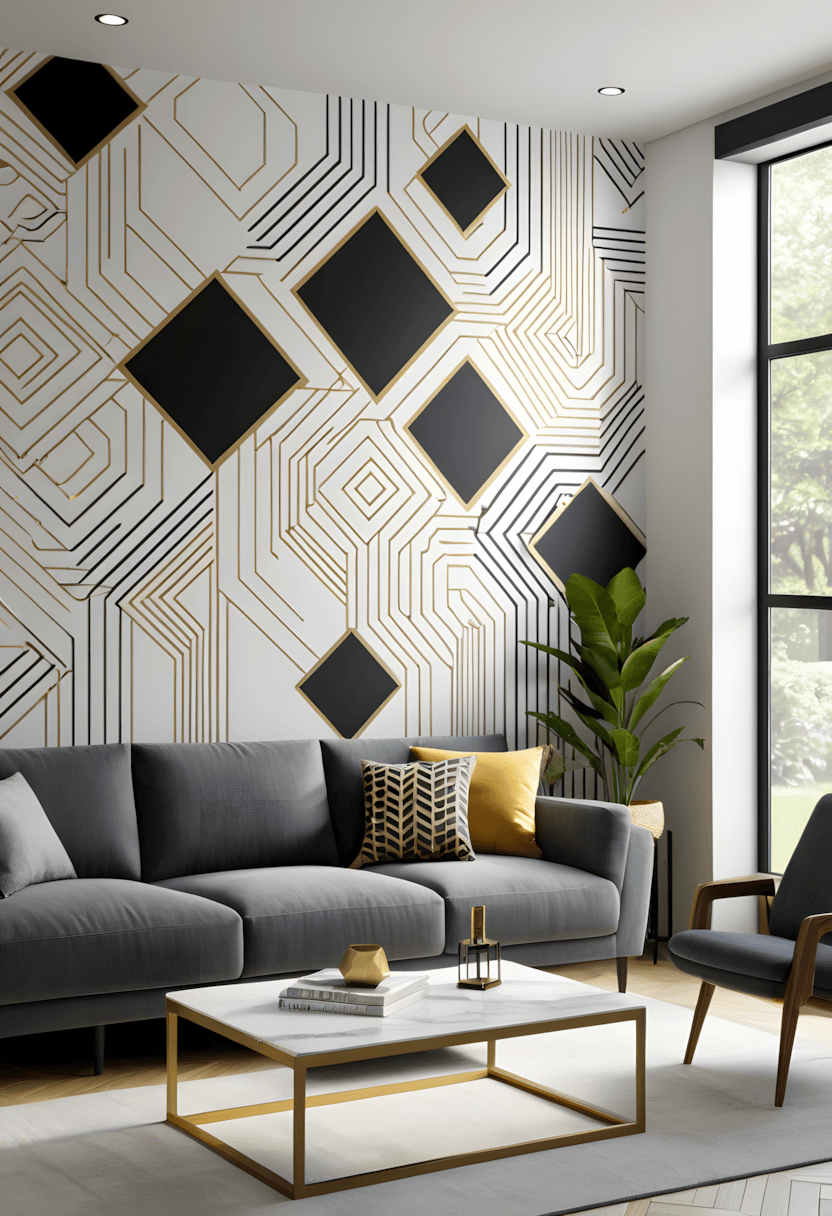
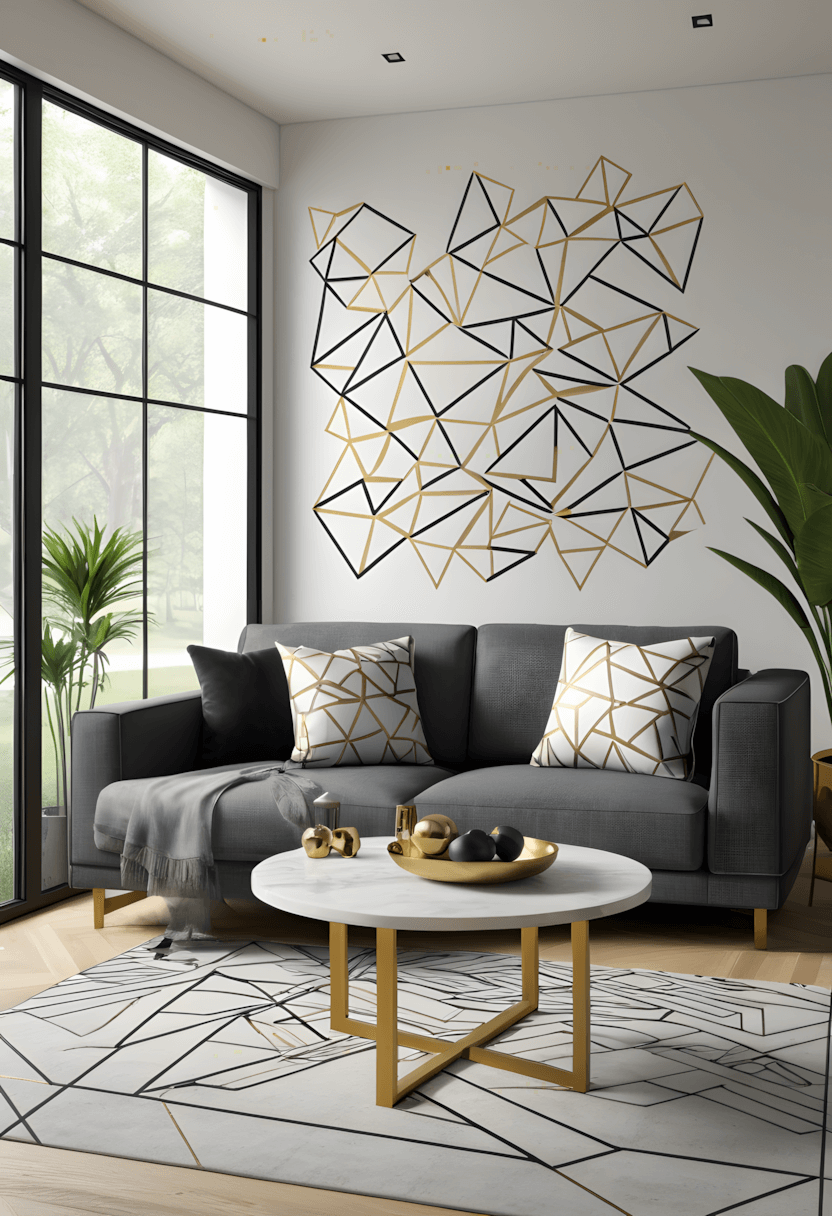
This contemporary approach often works well for homeowners wanting modern patterns without permanent commitment. Geometric decals typically provide clean, graphic interest while remaining removable for renters or frequent style changers.
Pattern planning: Computer layouts or paper templates often help visualize final arrangements before application.
Finish selection: Matte, glossy, or metallic finishes often provide different visual effects and light interaction qualities.
11. Wood Accent Wall Creation
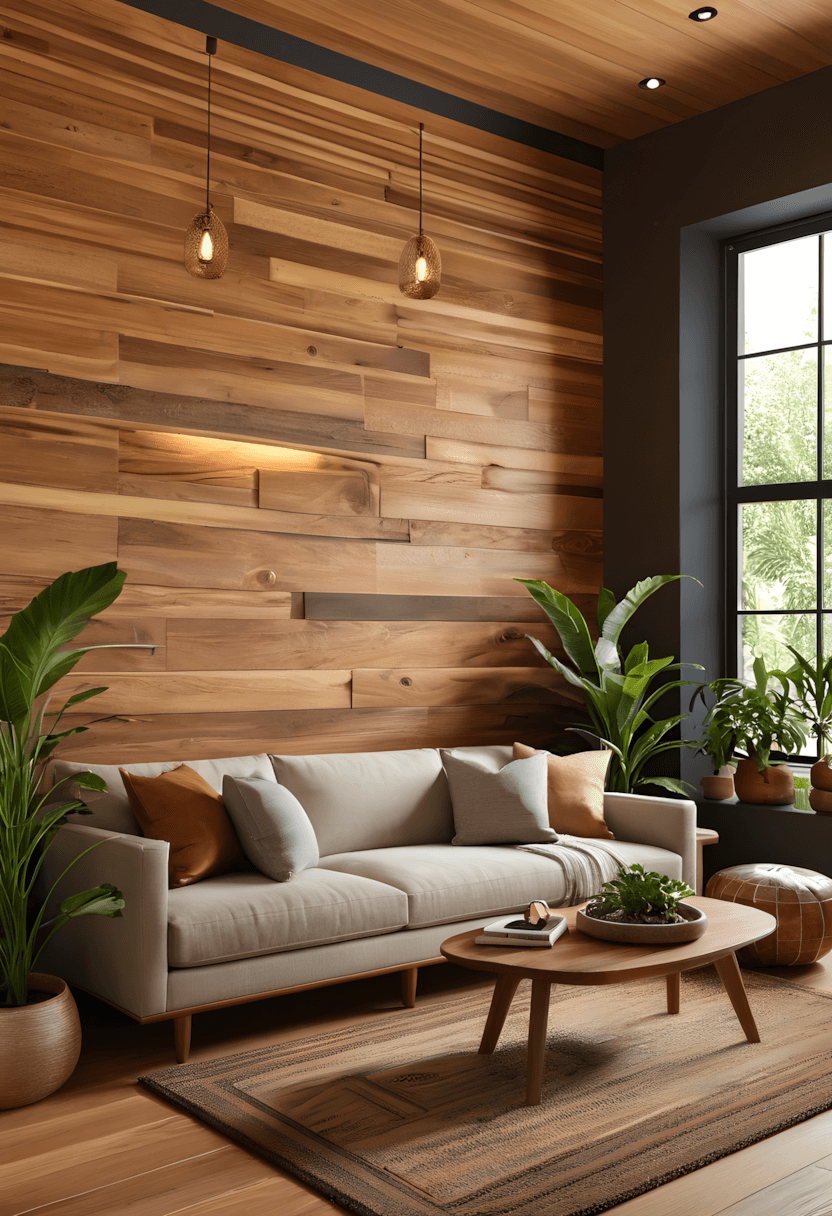
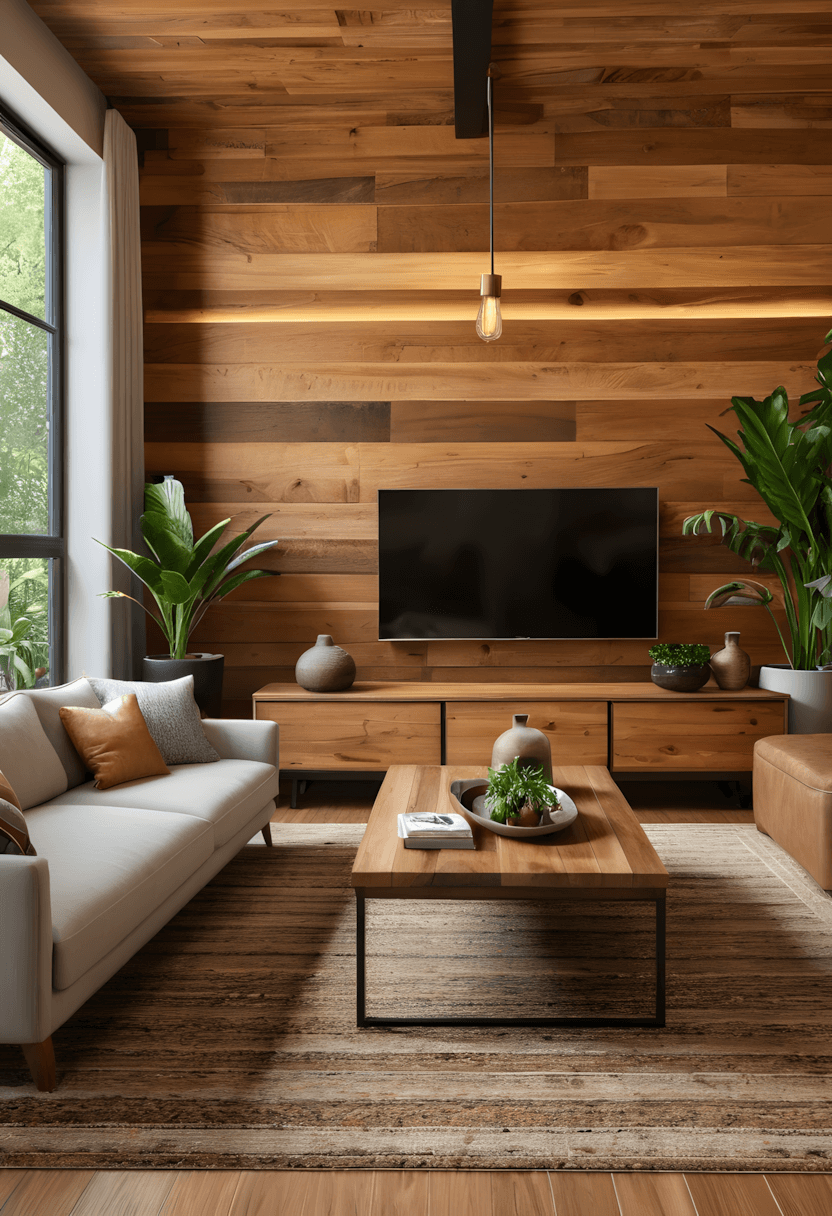
This warming approach often appeals to homeowners wanting natural texture and organic character. Wood accent walls typically add warmth and visual interest while creating cozy, inviting atmospheres.
Wood selection: Reclaimed materials often provide character and sustainability benefits, while new lumber typically offers consistency and predictable appearance.
Installation consideration: Proper moisture barriers and ventilation often become important for long-term durability and appearance.
12. Industrial Shelving Systems
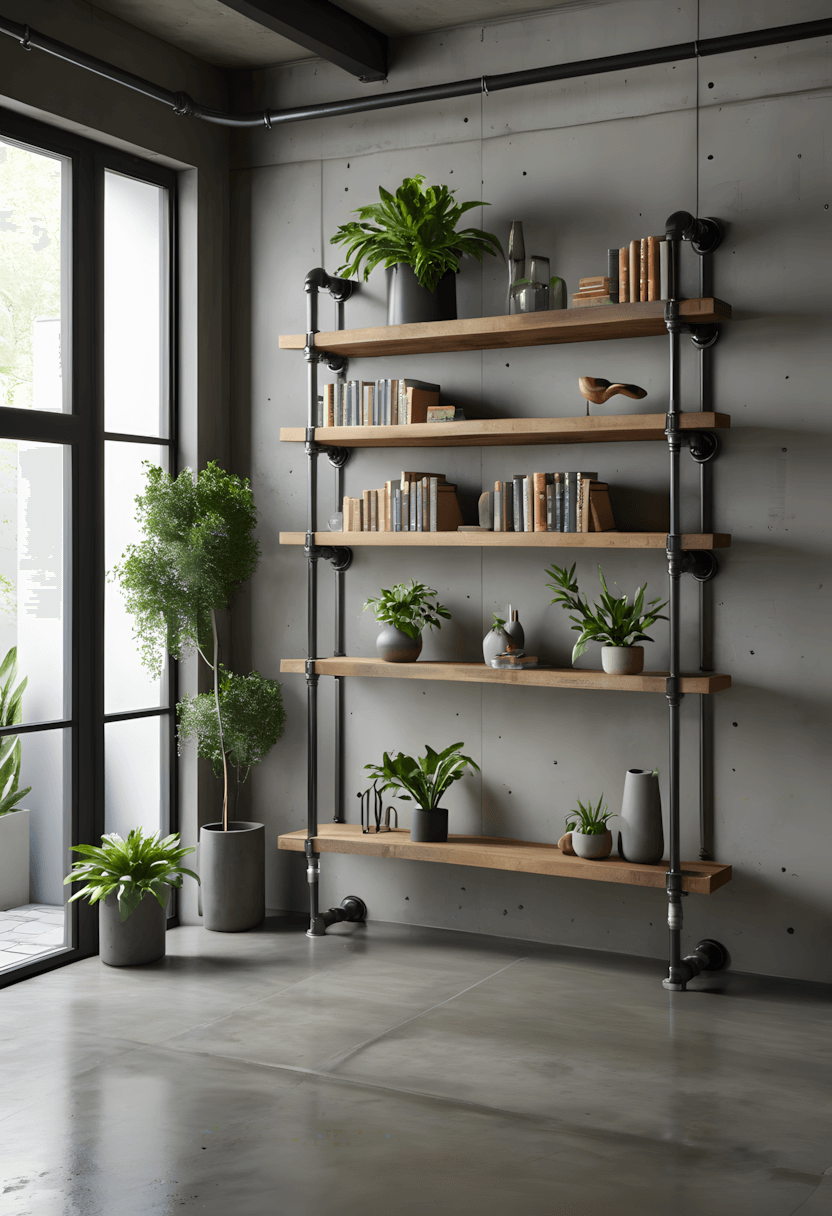
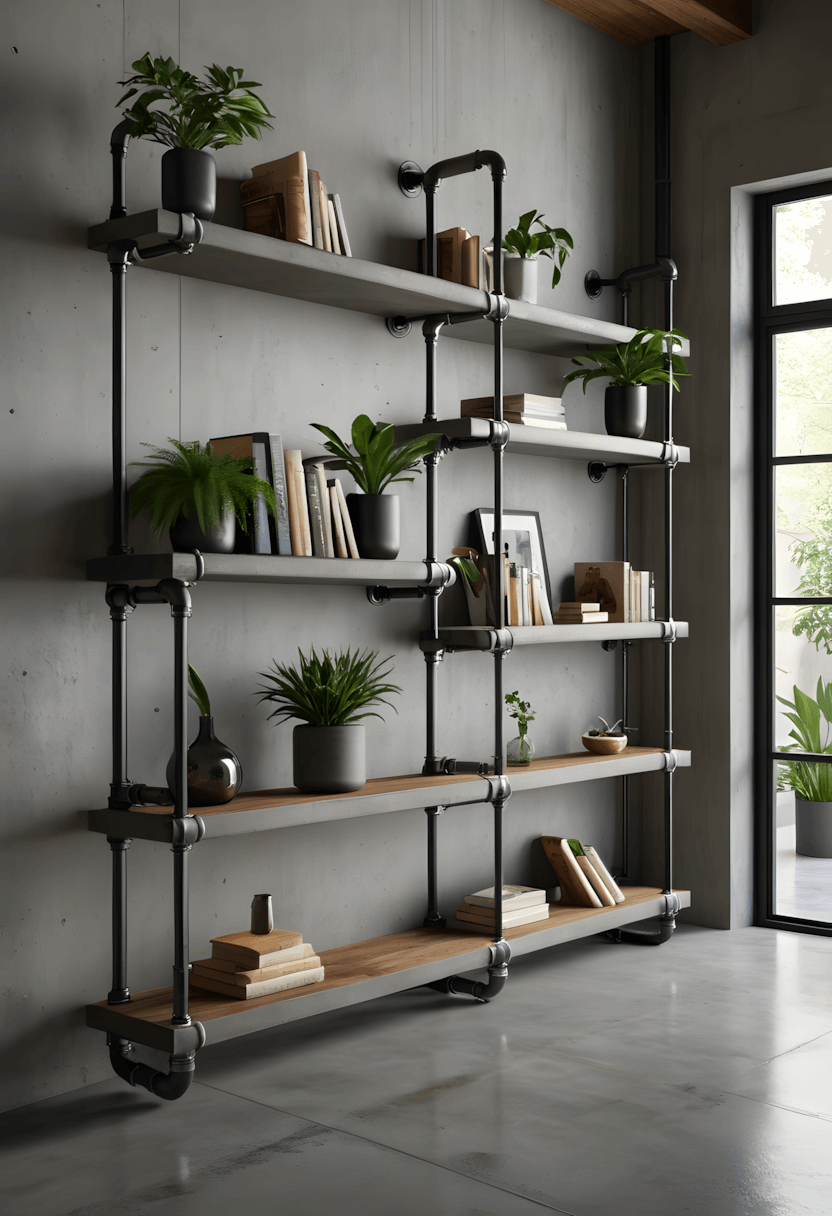
This utilitarian approach often works well for homeowners appreciating urban, loft-style aesthetics. Metal pipe shelving typically provides both storage and visual interest while adding industrial character.
Design compatibility: This style often works particularly well with exposed brick, concrete, or other industrial elements.
Load consideration: Proper wall anchoring often becomes crucial for safely supporting books, art, and decorative objects.
13. Large-Scale Photography
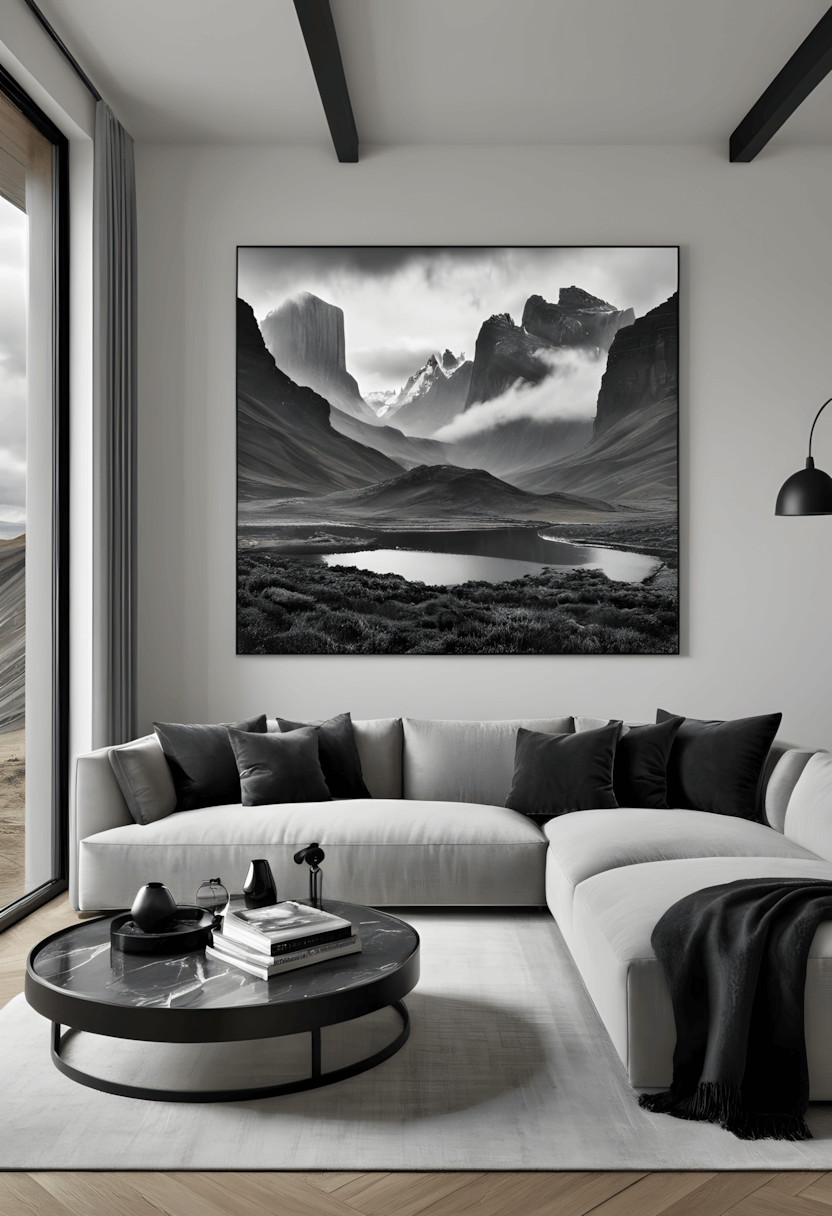
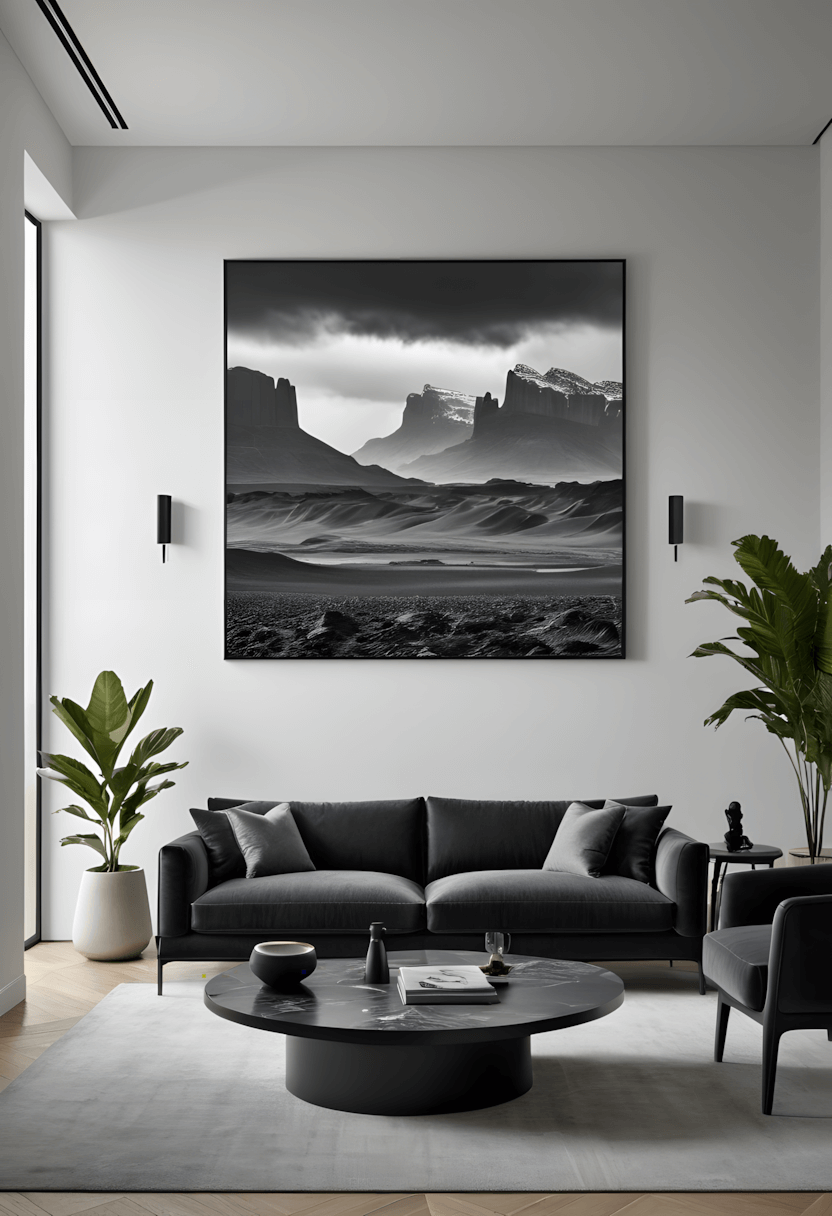
This impactful approach often appeals to homeowners wanting bold artistic statements. Oversized photographic prints typically create dramatic focal points while reflecting personal interests or aesthetic preferences.
Subject selection: Landscapes, portraits, or abstract images often provide different emotional impacts and design effects.
Printing quality: Professional printing and proper framing often ensure longevity and visual impact worthy of the investment.
14. Architectural Lighting Integration
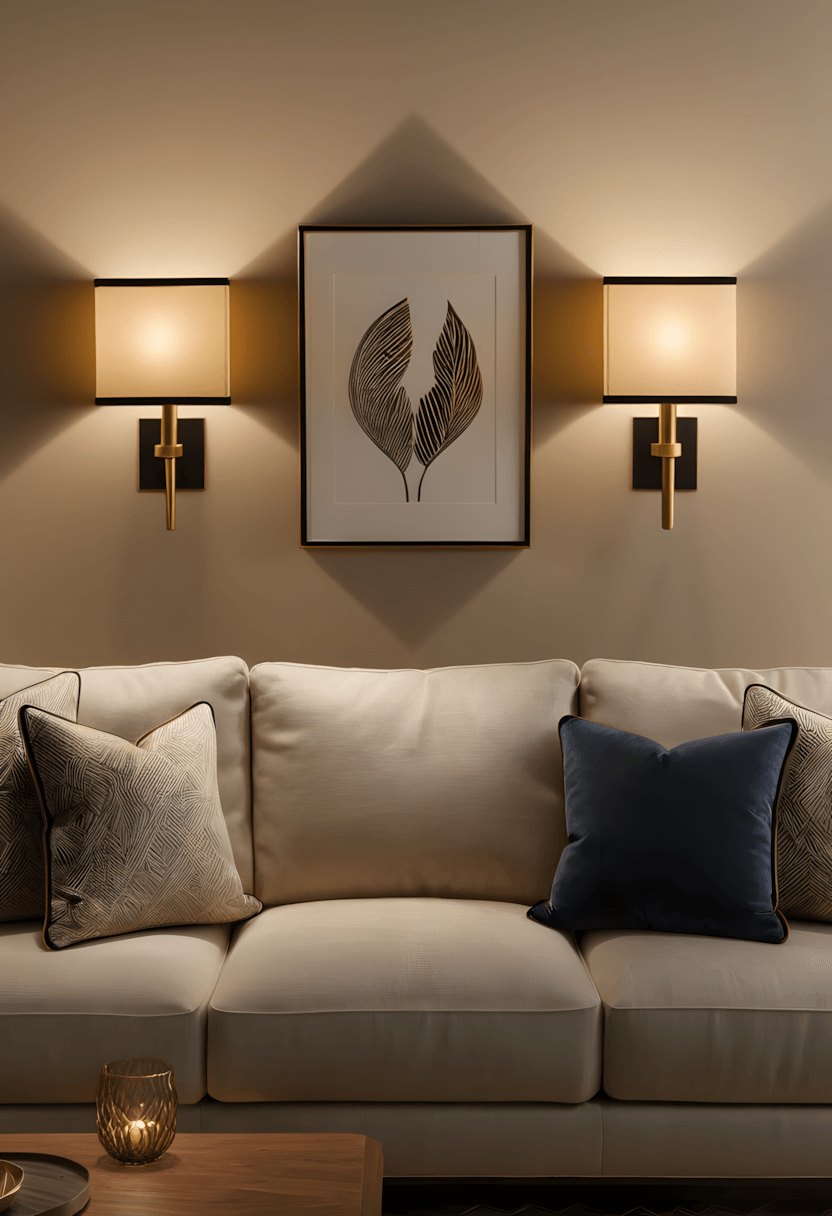
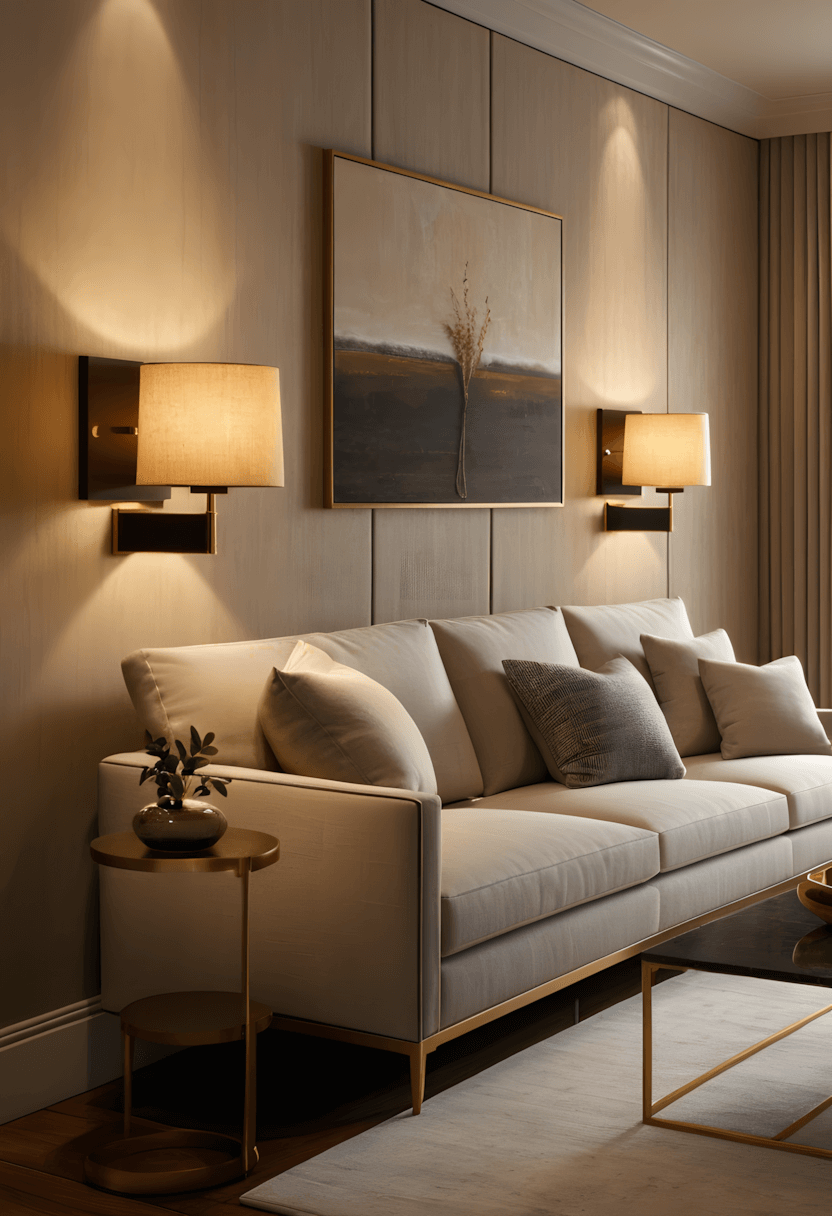
This functional approach often works well for homeowners wanting lighting that serves decorative purposes. Wall-mounted fixtures typically provide both illumination and visual interest while highlighting specific wall areas or artwork.
Fixture selection: Styles ranging from modern sconces to vintage industrial pieces often complement different design aesthetics.
Electrical consideration: Professional installation often ensures safety and proper functionality, particularly for hardwired fixtures.
15. Bohemian Textile Art
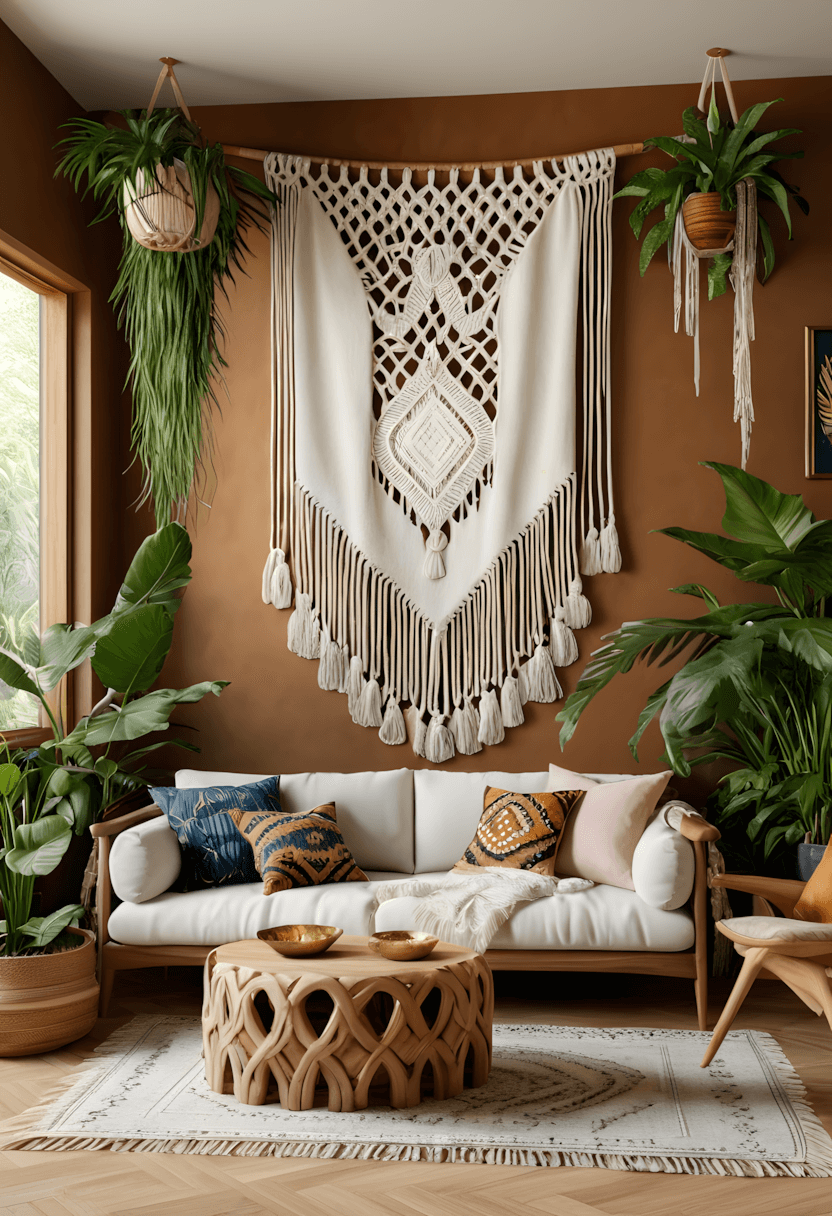
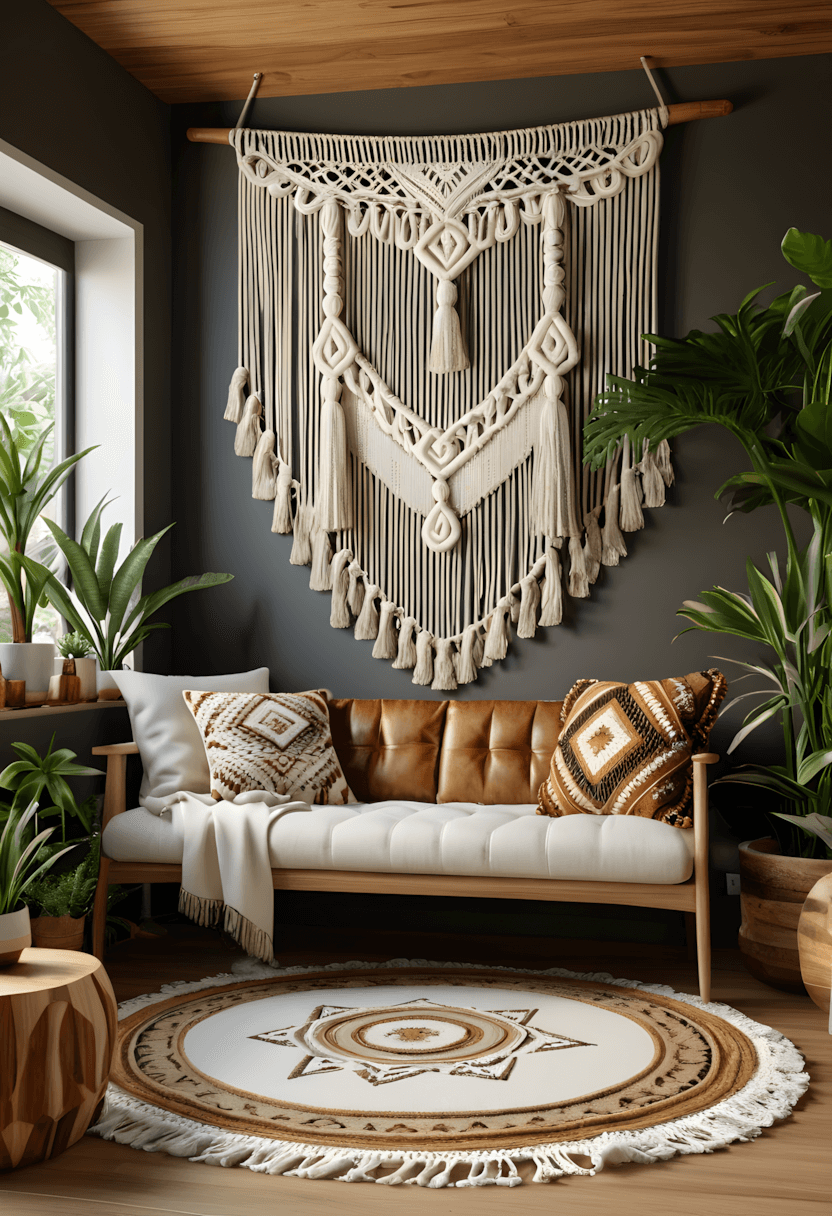
This cultural approach often appeals to homeowners appreciating global influences and handcrafted elements. Macramé, tapestries, or woven wall hangings typically add texture and artistic character while supporting artisan craftsmanship.
Authenticity consideration: Seeking pieces from authentic sources often ensures quality while supporting traditional craft communities.
Care requirements: Understanding cleaning and maintenance needs often helps preserve these often-delicate handmade pieces.
16. Interactive Chalkboard Surfaces
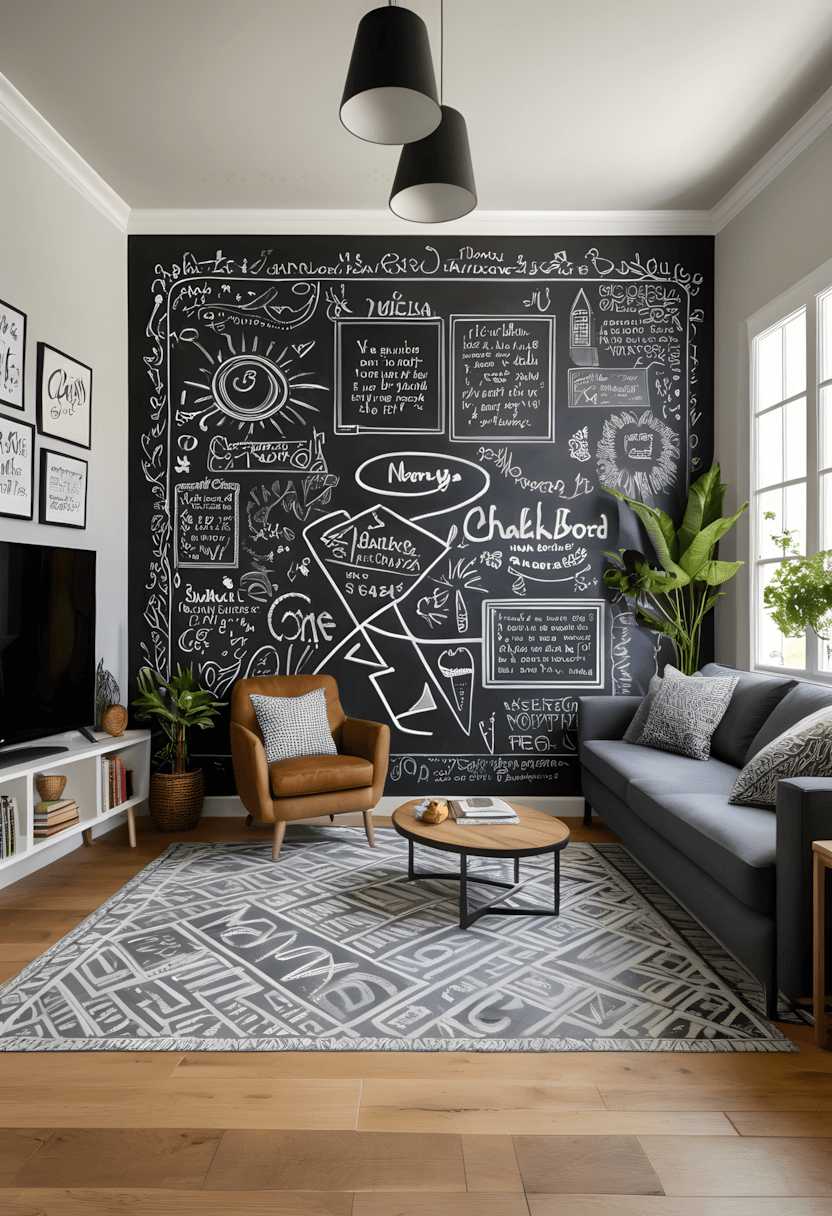
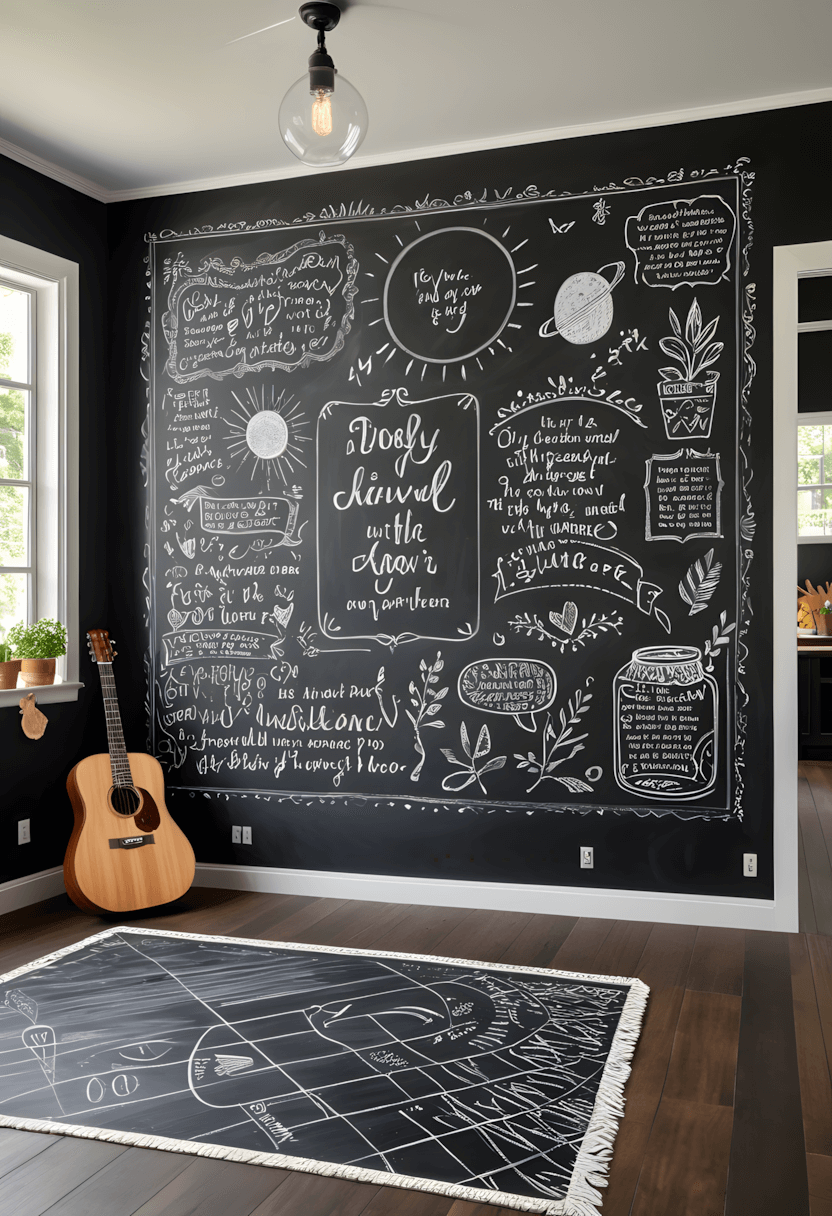
This flexible approach often works well for homeowners wanting customizable, changeable wall elements. Chalkboard paint or panels typically provide creative opportunities while allowing for regular updates and personalization.
Application areas: Designated sections often work better than full walls, providing creativity without overwhelming the space.
Quality materials: Professional-grade chalkboard paint often provides better writing surfaces and longer-lasting results than budget alternatives.
17. Modular Pegboard Systems
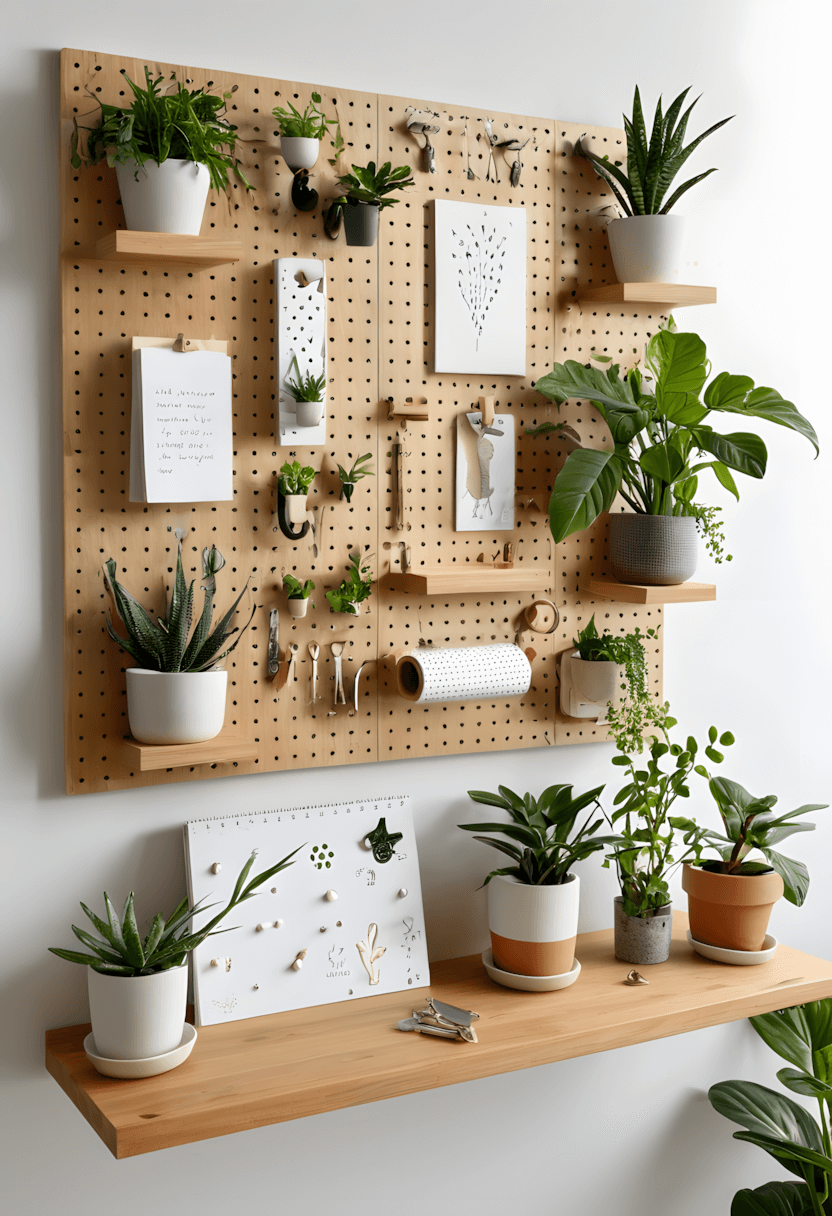
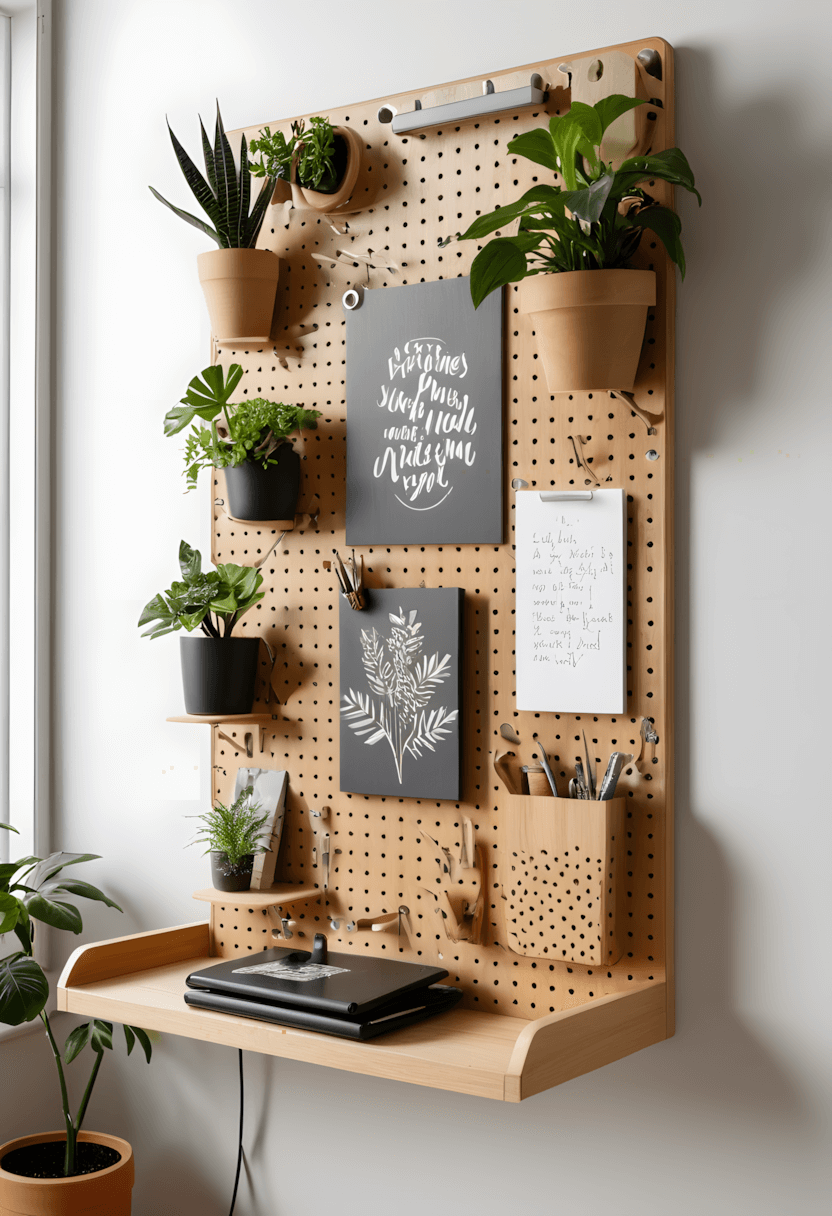
This adaptable approach often appeals to homeowners wanting flexible display and storage options. Pegboard systems typically allow for easy rearrangement while providing both functional and decorative possibilities.
Customization options: Various accessories and attachments often allow for personalized configurations that change with needs and seasons.
Finish selection: Painted or natural wood finishes often complement different design styles while maintaining the system’s functional benefits.
18. Decorative Border Treatments
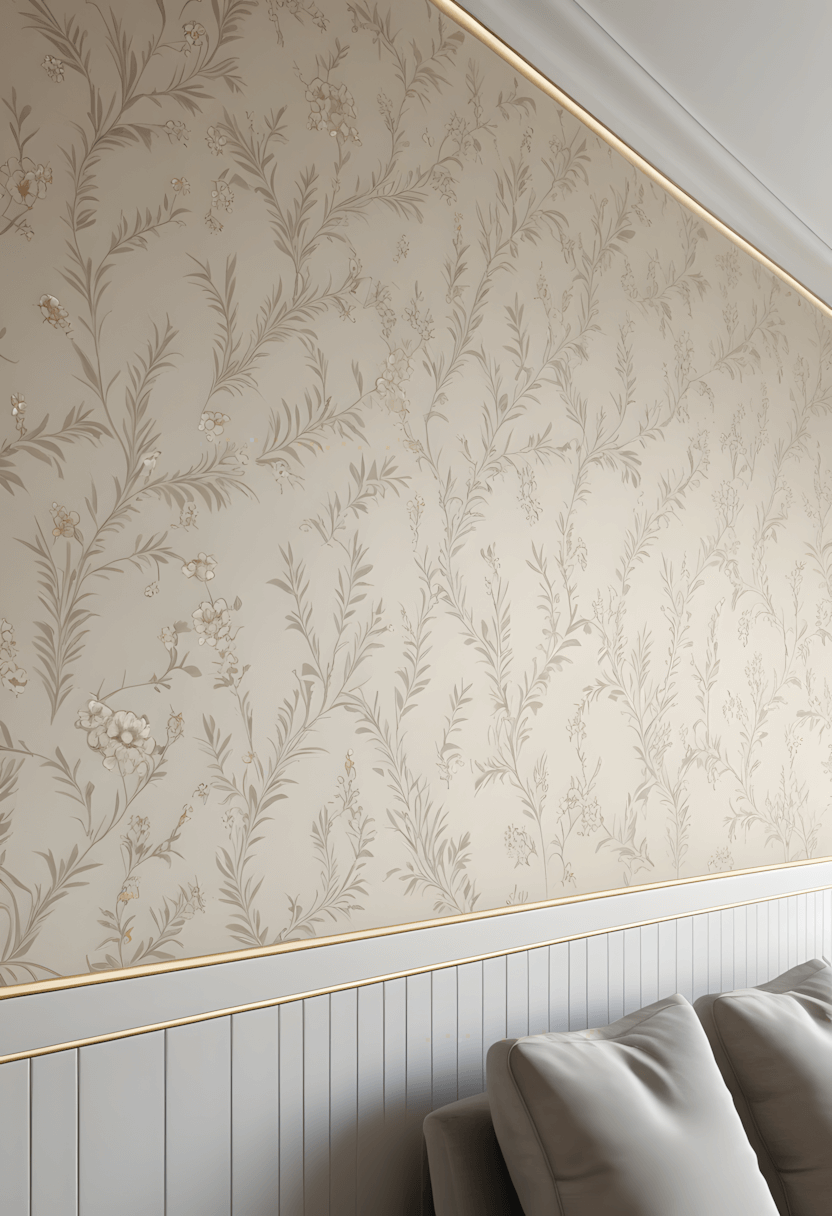
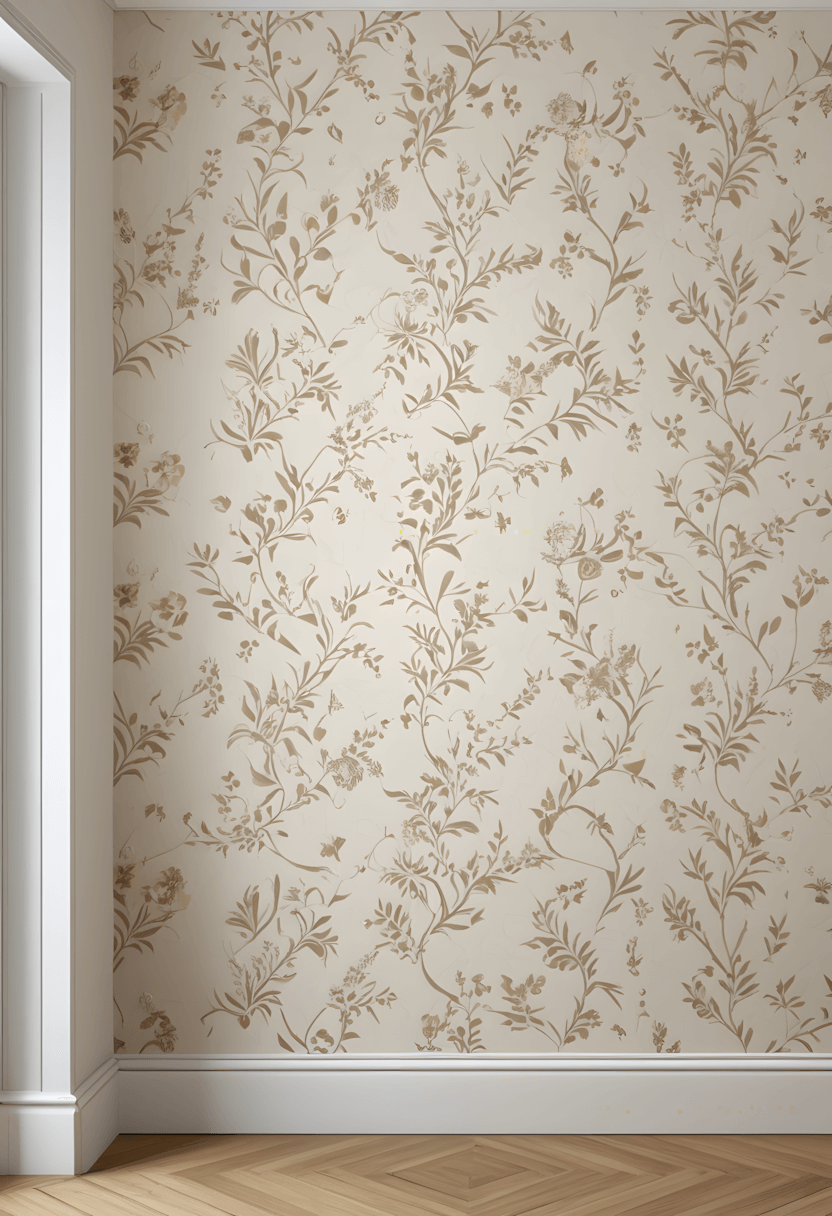
This subtle approach often works well for homeowners wanting pattern without overwhelming commitment. Wallpaper borders or decorative trim typically add visual interest while maintaining overall wall simplicity.
Placement strategy: Top borders often create crown molding effects, while wainscoting-height borders typically add traditional character.
Pattern coordination: Choosing borders that complement existing room elements often creates cohesive design without visual competition.
19. Metal Art Integration
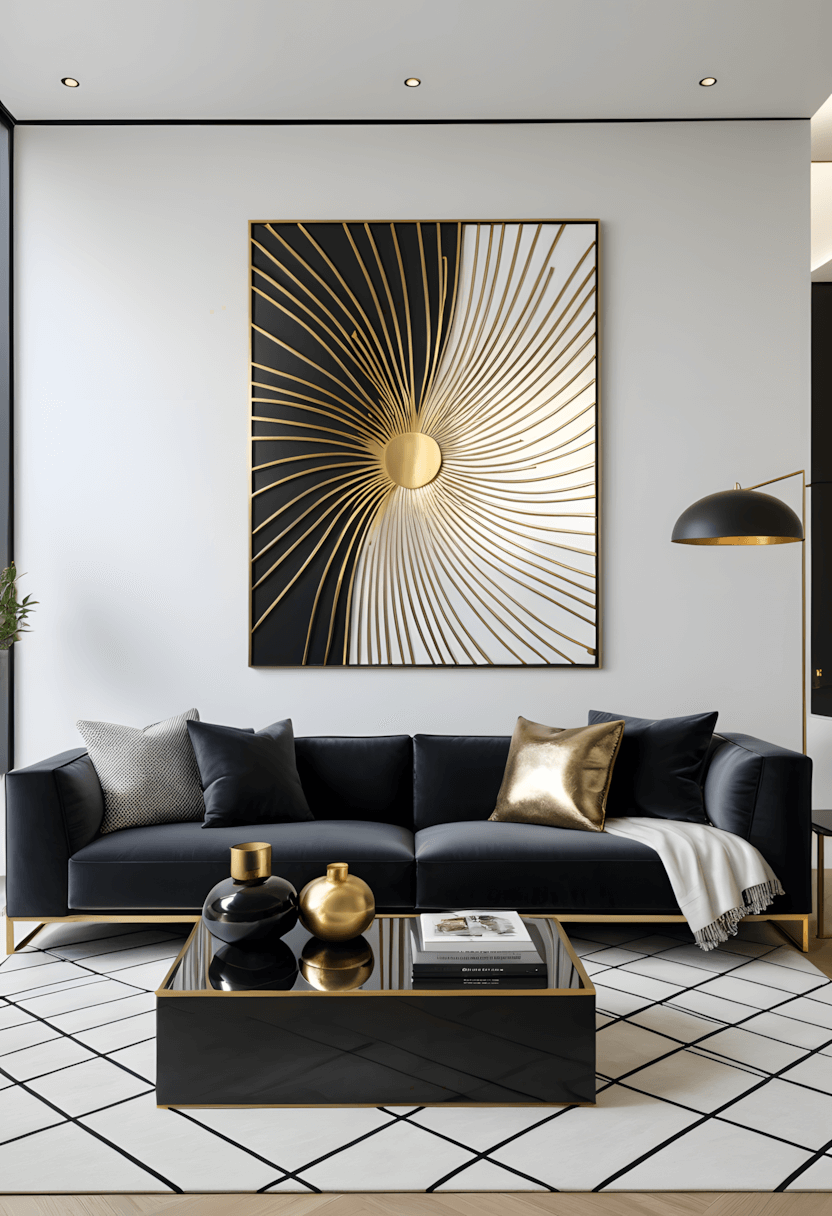
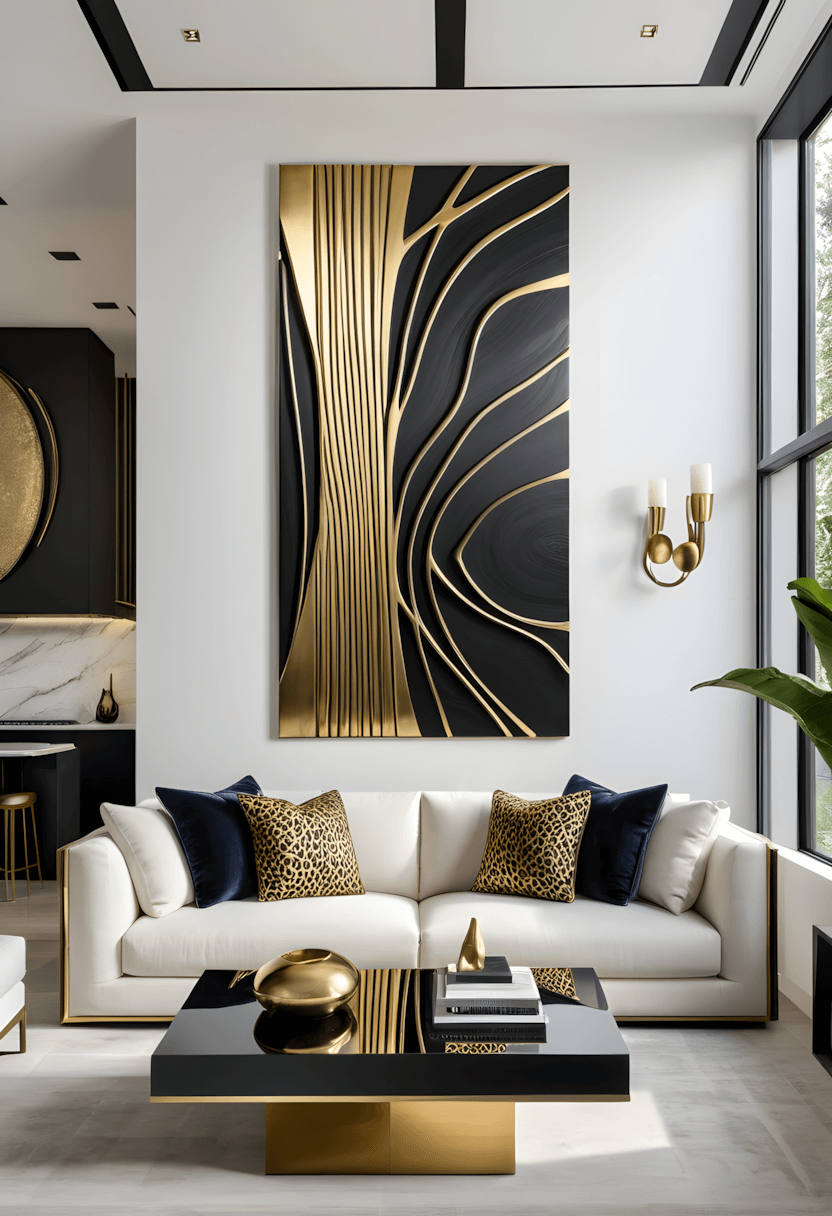
This contemporary approach often appeals to homeowners wanting modern, sophisticated wall elements. Metal artwork typically provides durability while adding industrial or artistic character through various finishes and forms.
Finish variety: Brushed, polished, or patinated metals often provide different aesthetic qualities while complementing various color schemes.
Weight consideration: Proper mounting systems often become important for safely supporting substantial metal pieces.
20. Personalized Signage
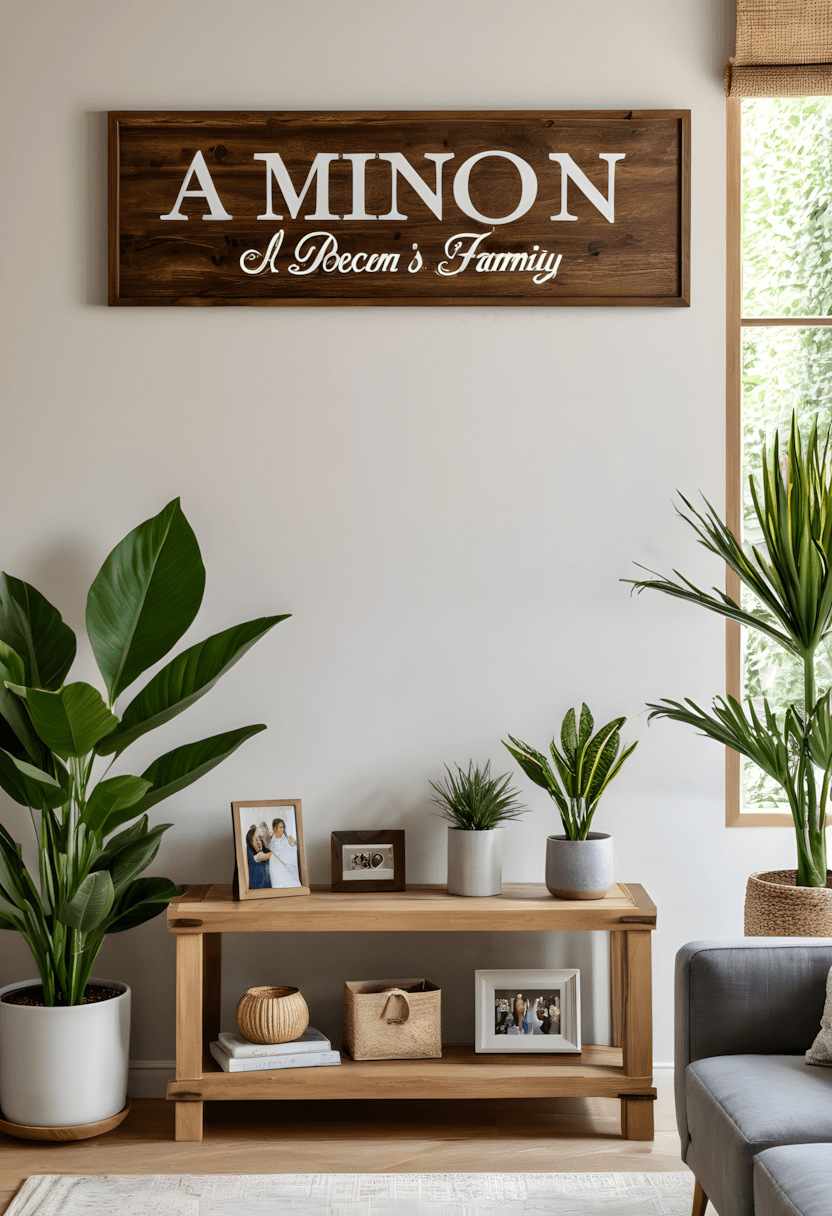

This meaningful approach often works well for homeowners wanting unique, family-specific elements. Custom signs typically add personal character while creating conversation pieces that reflect individual identity.
Material options: Wood, metal, or acrylic signs often provide different aesthetic qualities while accommodating various design preferences.
Size planning: Proportioning signs appropriately to wall space often ensures visual balance rather than overwhelming or underwhelming effects.
21. Fabric Tapestry Display
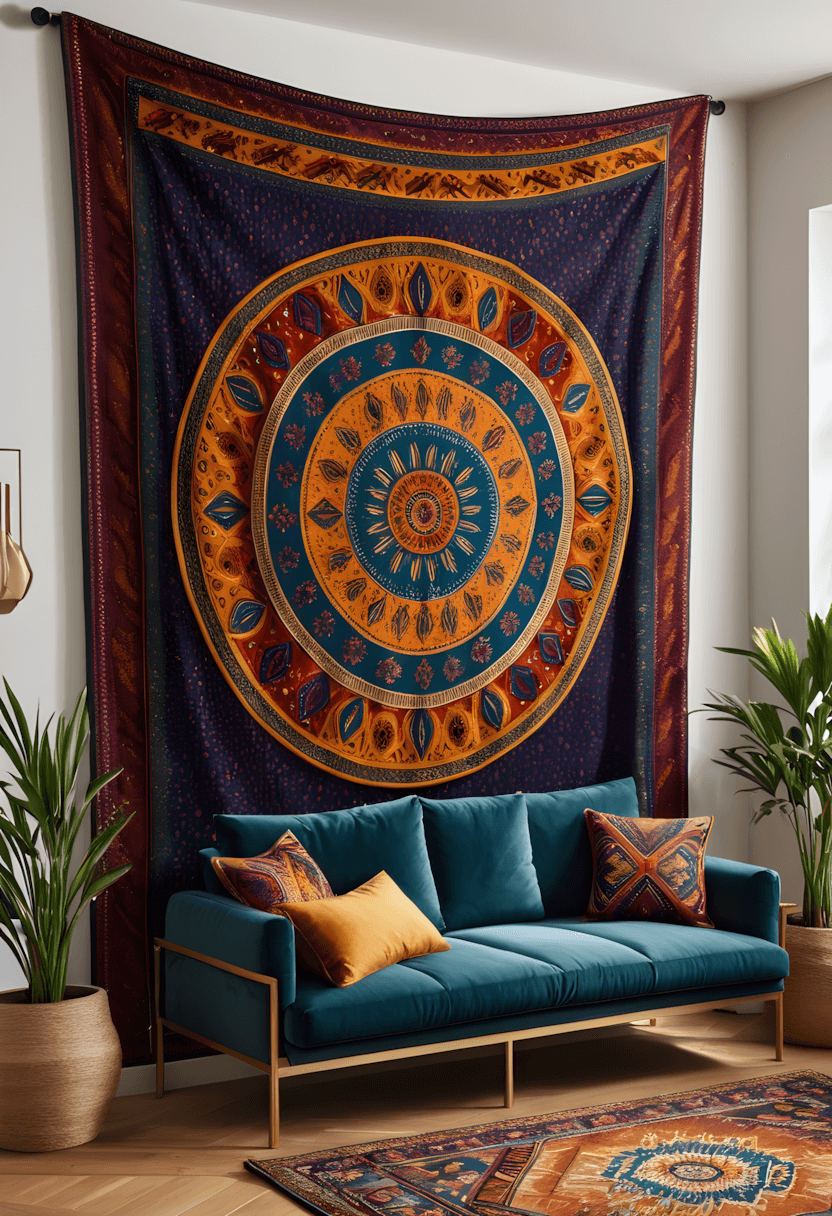
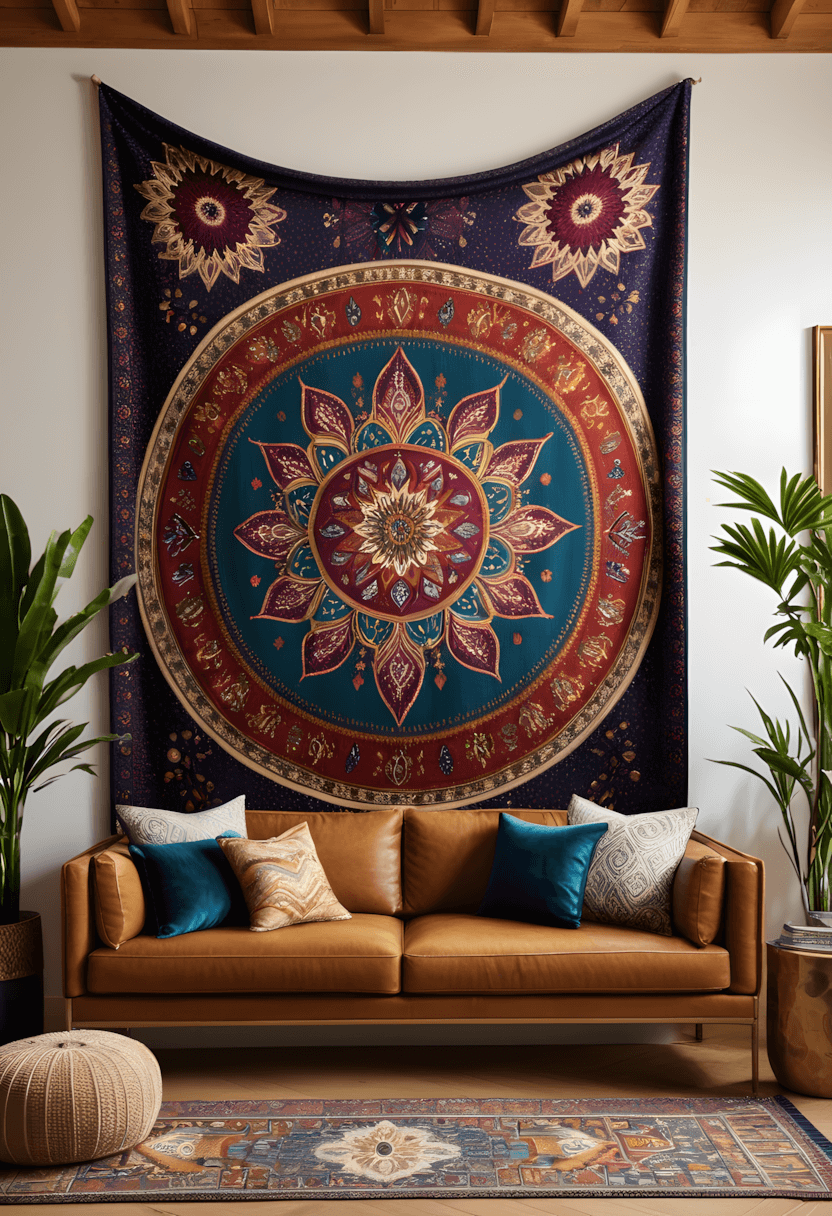
This textile approach often appeals to homeowners appreciating color, pattern, and cultural artistry. Tapestries typically add warmth and softness while providing large-scale artistic impact through traditional or contemporary designs.
Hanging methods: Proper support systems often preserve fabric integrity while ensuring secure, attractive display.
Cultural consideration: Authentic pieces often provide greater artistic and cultural value than mass-produced imitations.
22. Metallic Panel Systems
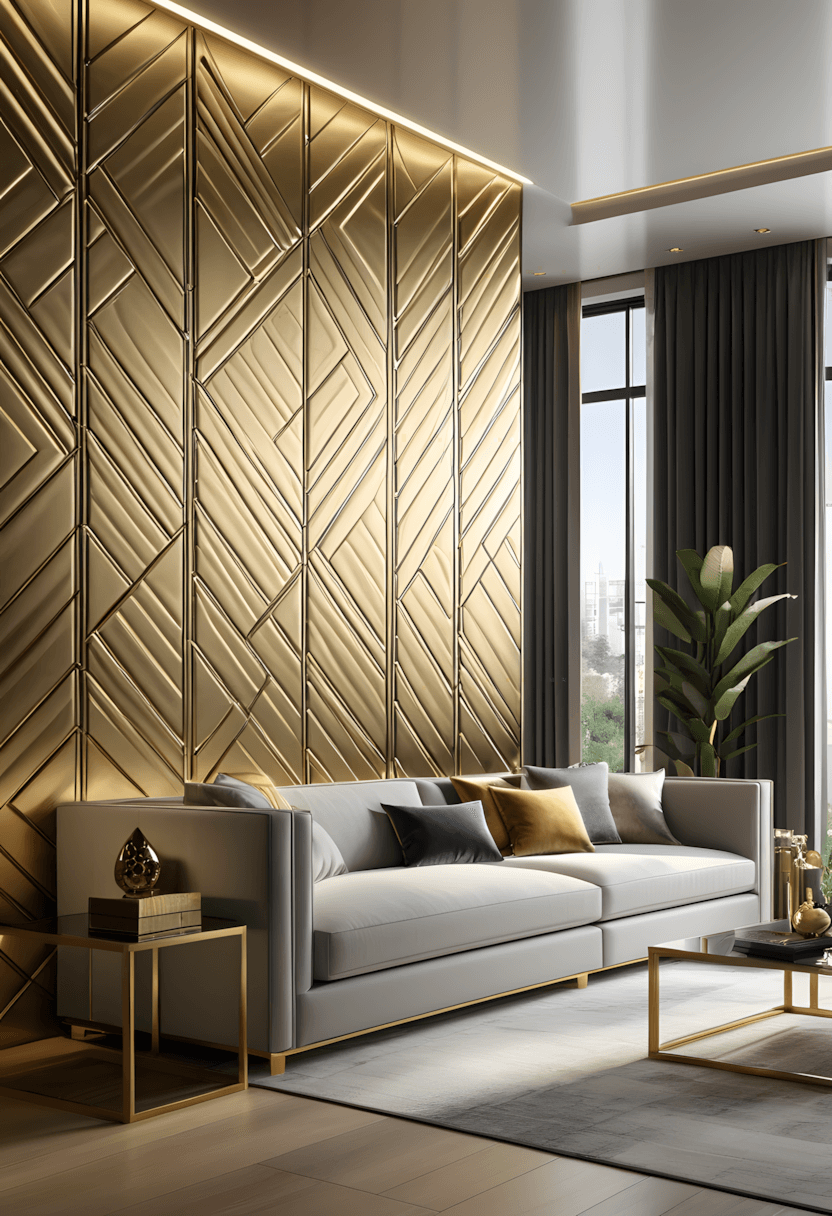
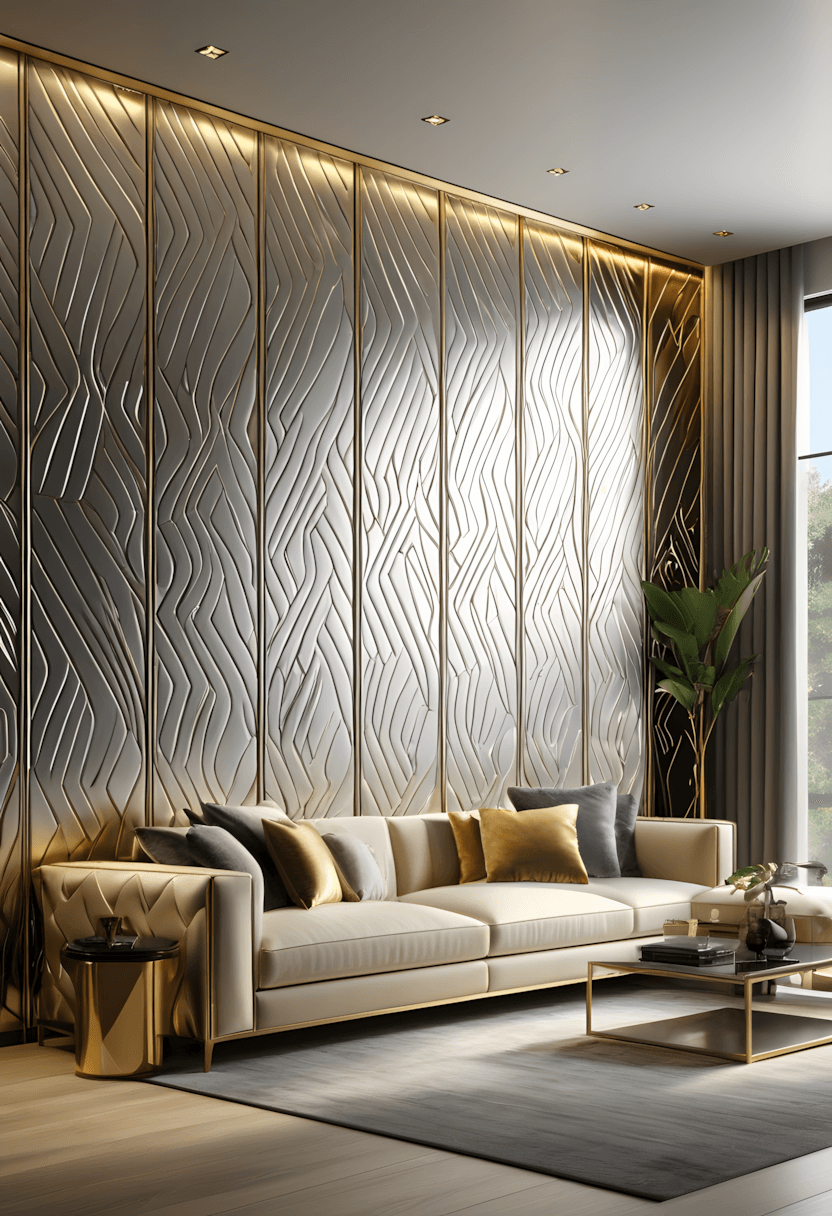
This luxurious approach often works well for homeowners wanting sophisticated, light-reflecting surfaces. Metallic panels typically add glamour while creating dynamic lighting effects throughout different times of day.
Installation requirements: Professional mounting often ensures proper support and safety for substantial metallic panel systems.
Maintenance consideration: Different metals often require specific cleaning approaches to maintain their lustrous appearance.
23. Mosaic Art Creation
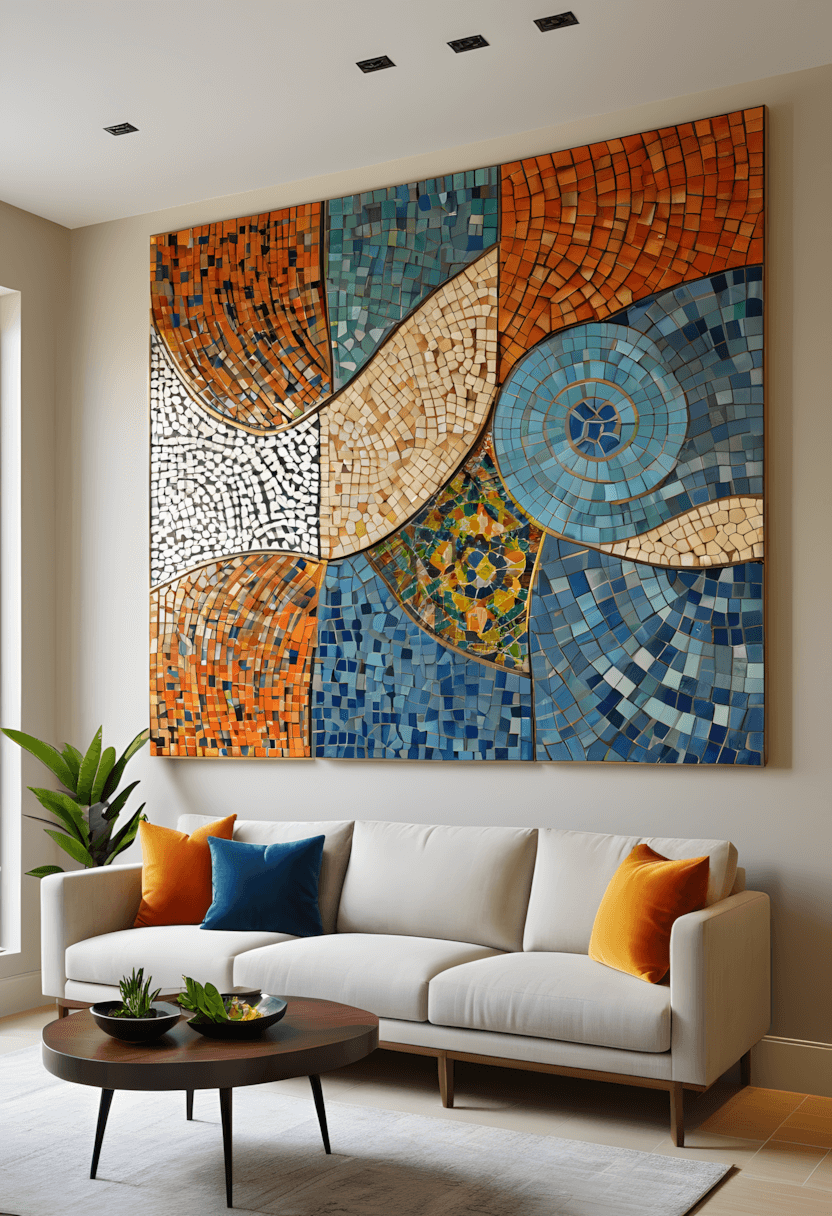
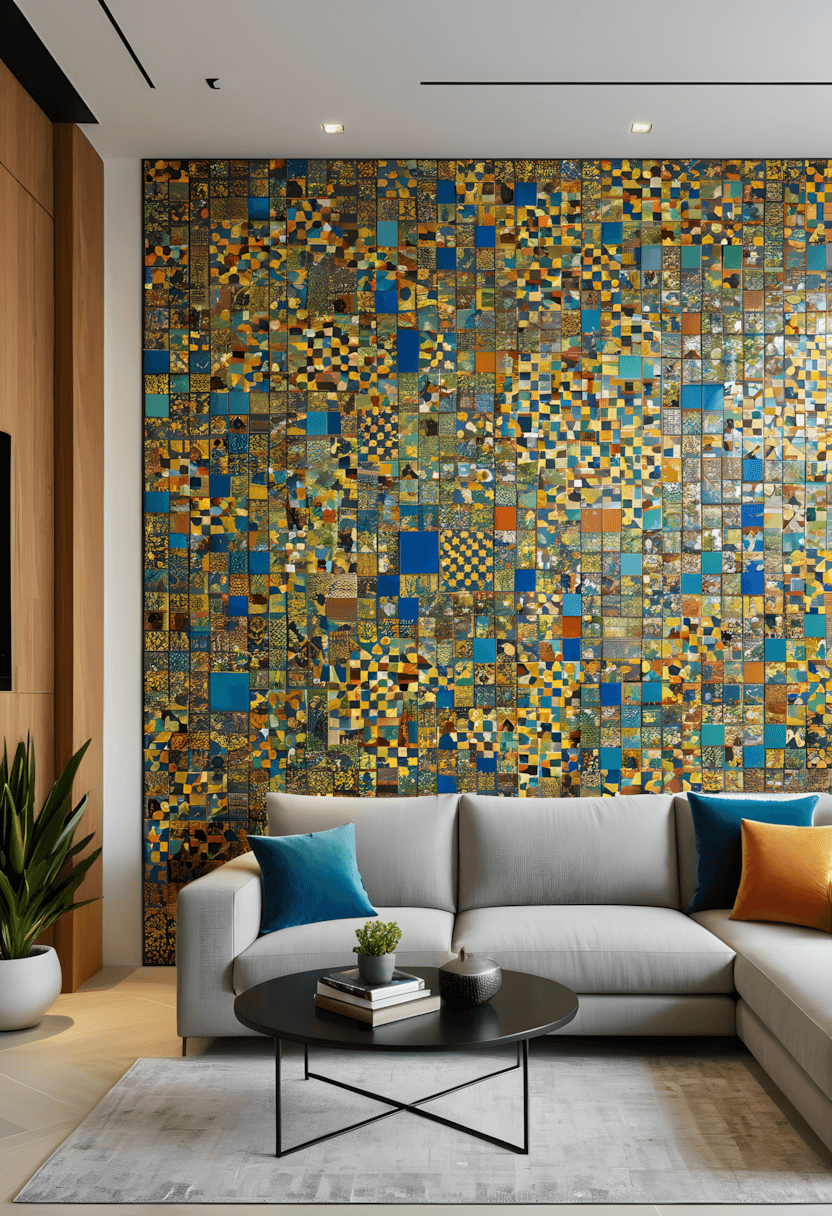
This artistic approach often appeals to homeowners wanting unique, handcrafted elements. Mosaic installations typically provide color and pattern while creating permanent artistic features that cannot be replicated.
Design planning: Professional layouts often ensure successful patterns and proper material quantities before installation begins.
Material selection: Glass, ceramic, or stone tiles often provide different aesthetic qualities and durability characteristics.
24. Reclaimed Wood Art
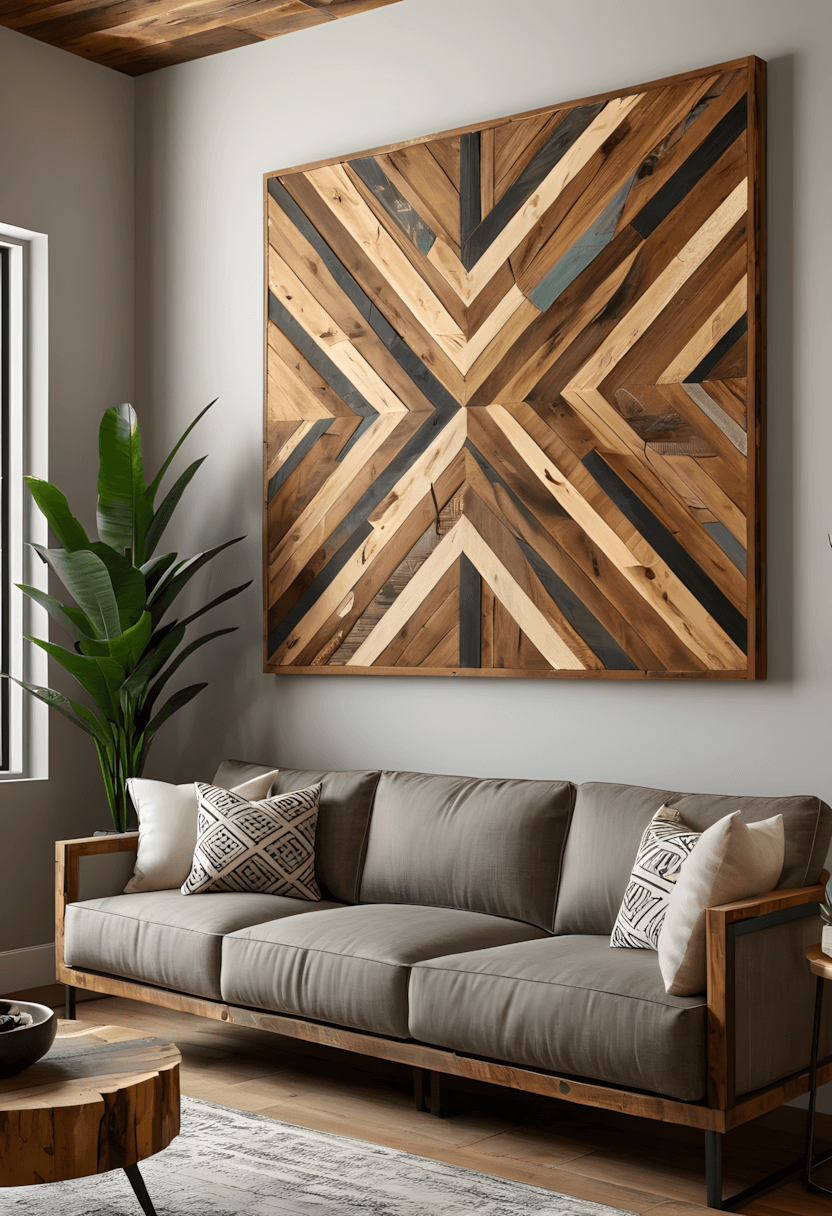
This sustainable approach often works well for homeowners appreciating environmental consciousness and authentic character. Repurposed wood typically provides unique textures and history while supporting eco-friendly design practices.
Source consideration: Ensuring proper cleaning and treatment often becomes important for safely using reclaimed materials indoors.
Design flexibility: Arrangements ranging from geometric patterns to organic compositions often accommodate various aesthetic preferences.
25. Mixed Media Installations
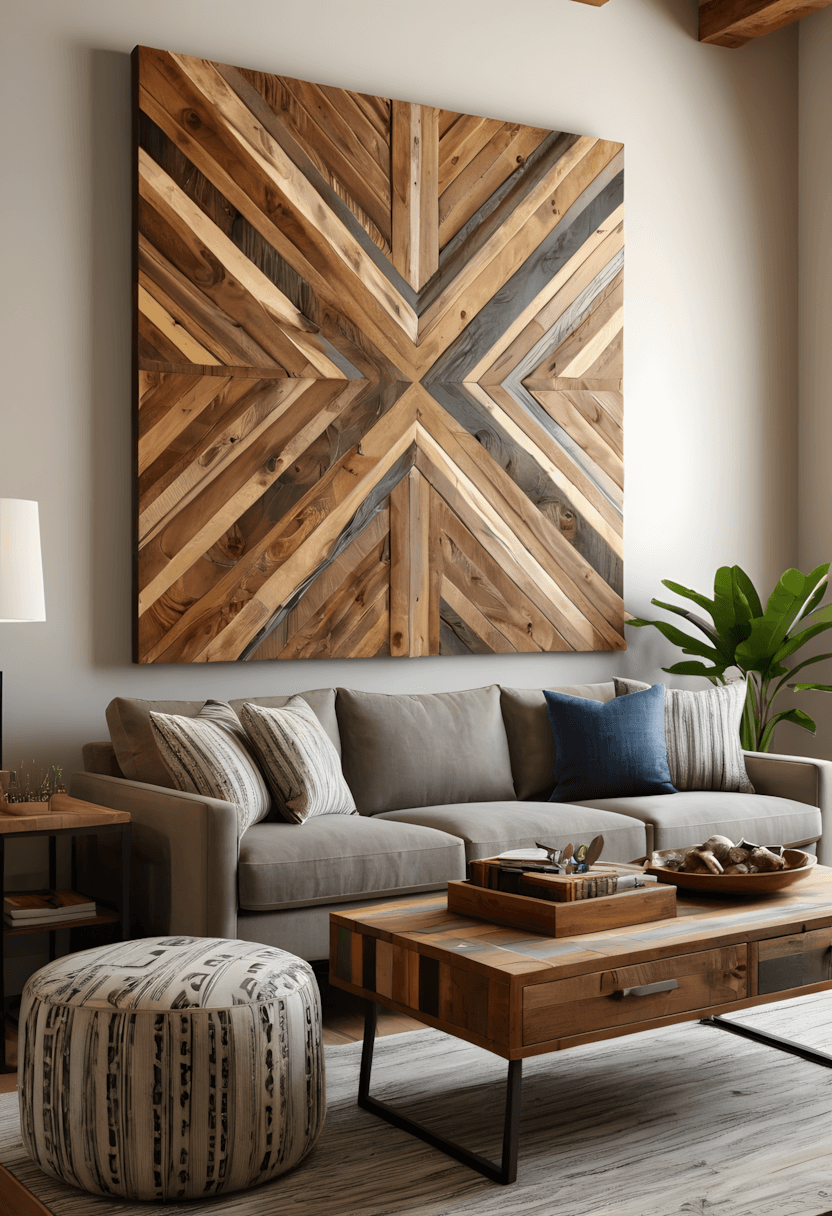
This creative approach often appeals to homeowners wanting truly unique, artistic wall treatments. Combining various materials and techniques typically creates one-of-a-kind installations that serve as major focal points.
Planning importance: Detailed design development often ensures successful integration of different materials and techniques.
Professional consultation: Complex installations often benefit from professional design and installation expertise to achieve desired results.
Understanding Scale and Proportion
Through various projects, I’ve observed that successful wall decor often depends on understanding the relationship between artwork size, wall dimensions, and existing furniture proportions. Oversized pieces often work well as dramatic focal points, while grouped smaller pieces typically create more intimate, collected feelings.
The general guideline often suggests that artwork should occupy roughly two-thirds to three-quarters of the wall space above furniture pieces. However, personal preference and room scale often allow for creative interpretation of these traditional proportions.
Planning and Installation Considerations
Creating effective wall decor often requires careful planning of placement, mounting methods, and electrical requirements. Professional consultation often becomes valuable for substantial installations, particularly those involving structural modifications or electrical work.
Consider factors such as wall construction, load-bearing capacity, and access to electrical circuits when planning elaborate wall treatments. Proper planning often prevents costly mistakes and ensures long-term satisfaction with the investment.
Maintenance and Longevity
Different wall decor options often require varying levels of maintenance and care. Natural materials typically need periodic cleaning and protection, while synthetic options often provide easier long-term care.
Consider the long-term maintenance requirements when selecting wall treatments, particularly for families with busy lifestyles or those preferring low-maintenance decorating solutions.
Creating Cohesive Design
Successful wall decor often works best when it complements rather than competes with existing room elements. Consider existing color schemes, furniture styles, and architectural features when selecting wall treatments to ensure cohesive, intentional design results.
The most effective wall decor often reflects the inhabitants’ personality while supporting the room’s overall function and aesthetic goals. Balance personal expression with design principles to create walls that enhance rather than overwhelm the living space.
Remember: For any electrical work, structural changes, or built-in installations mentioned in these ideas, always consult with licensed professionals to ensure proper installation and code compliance.

